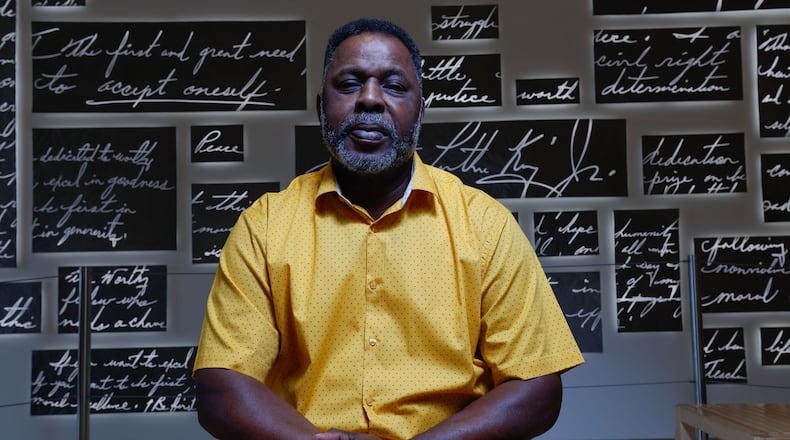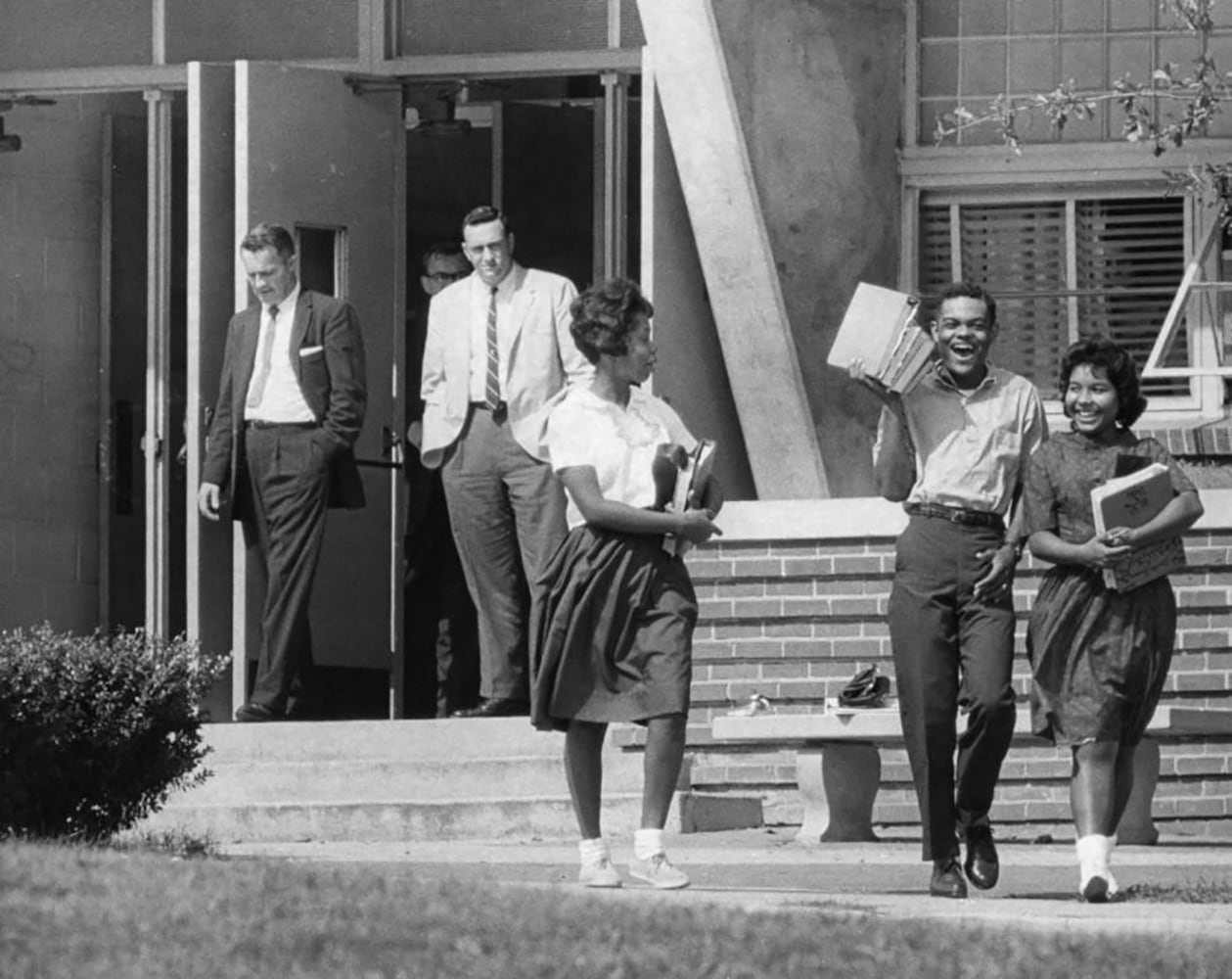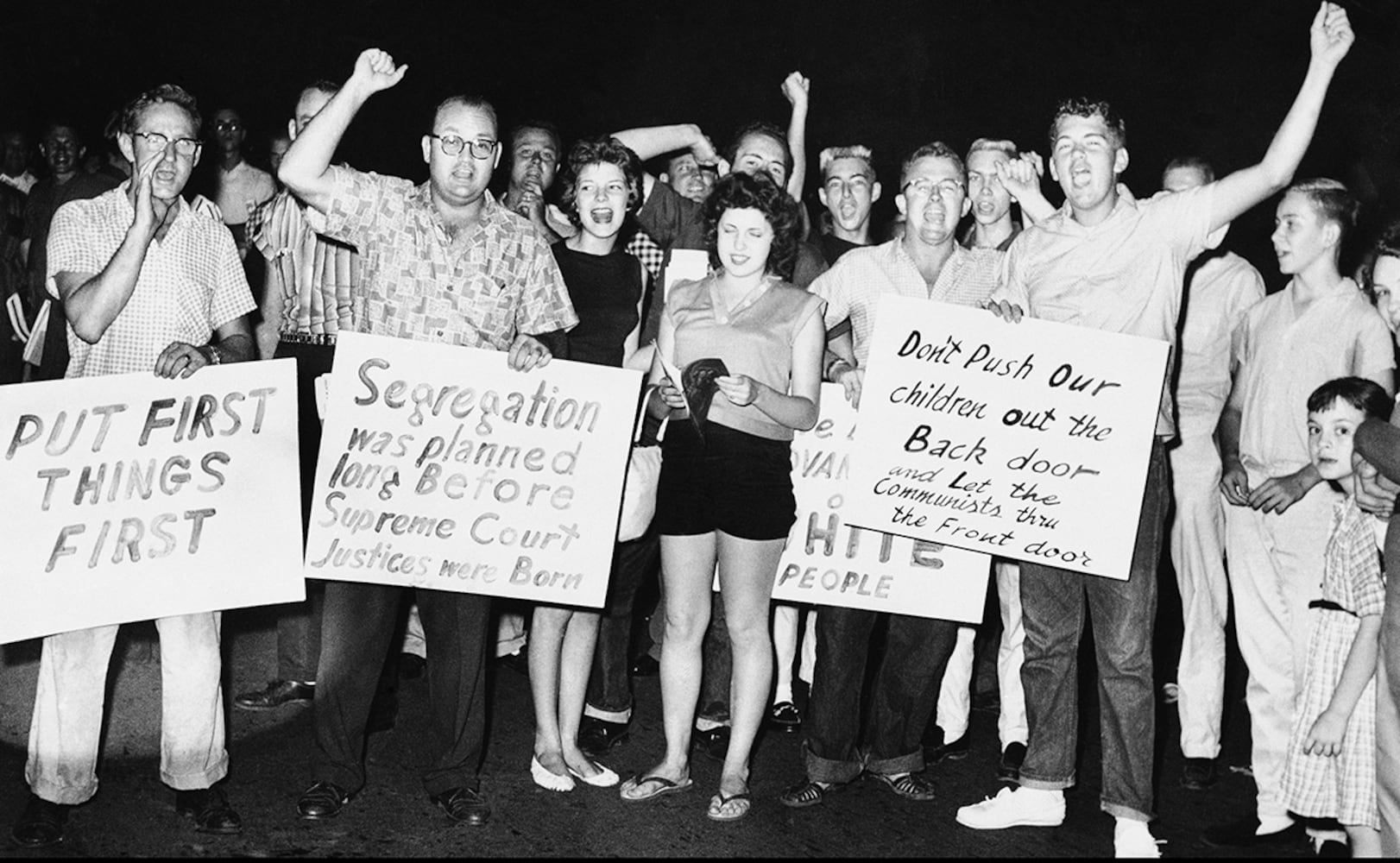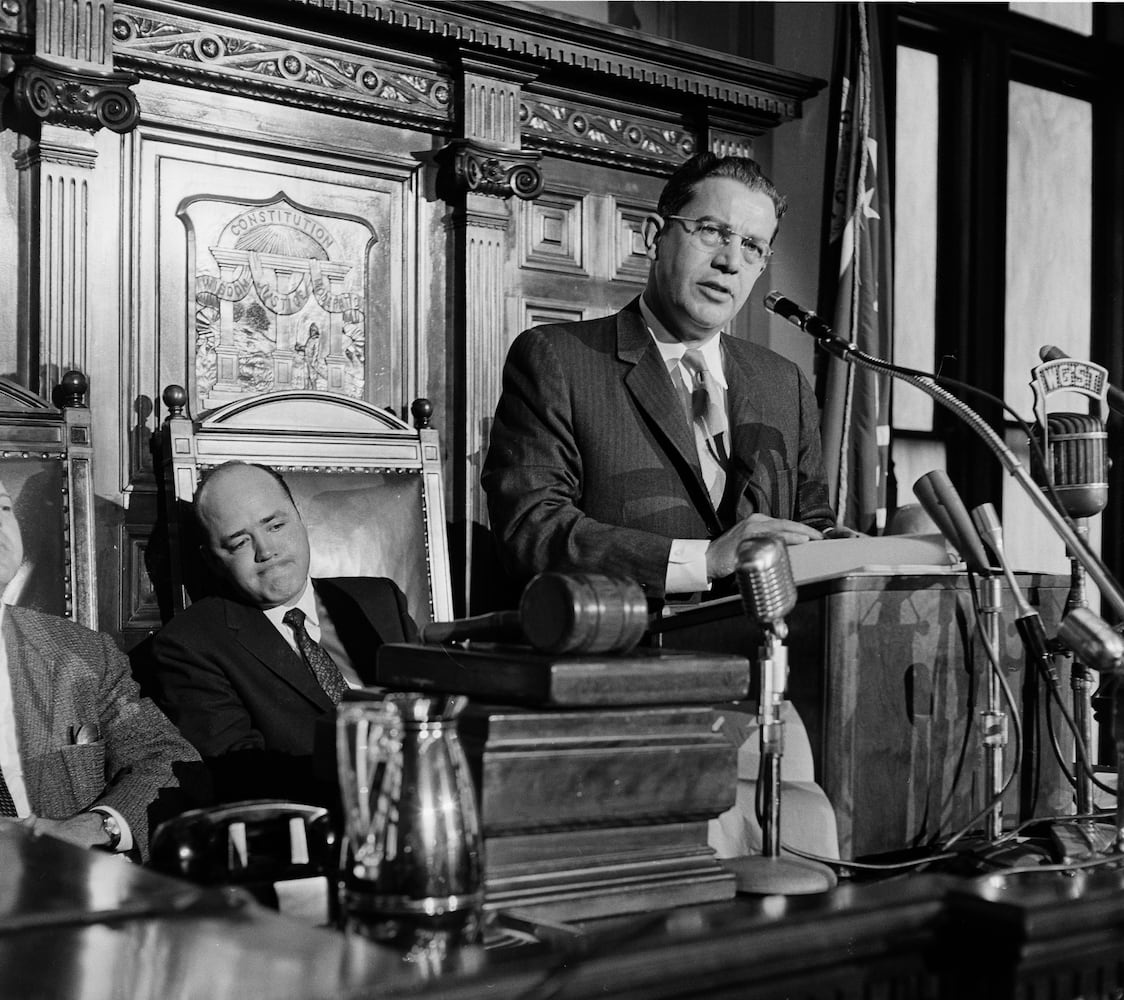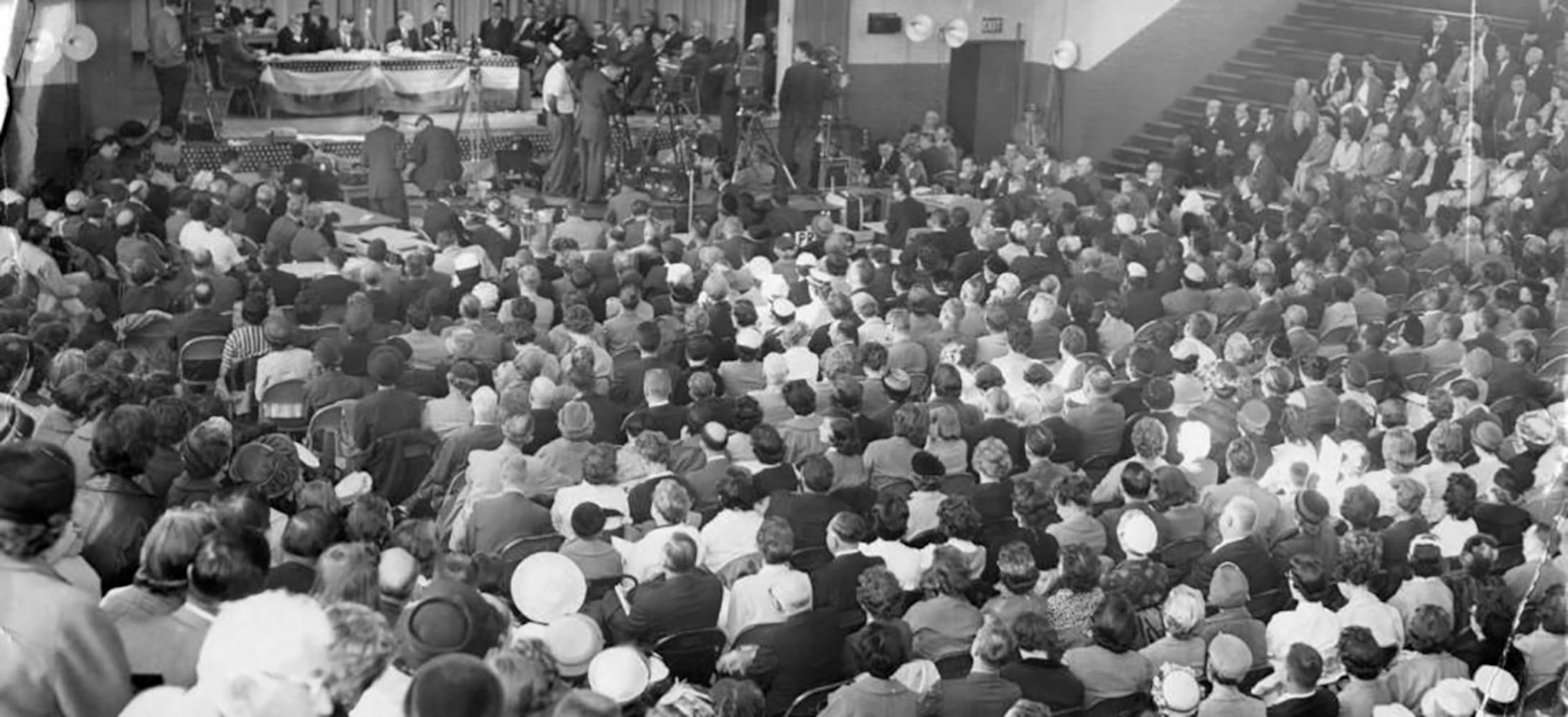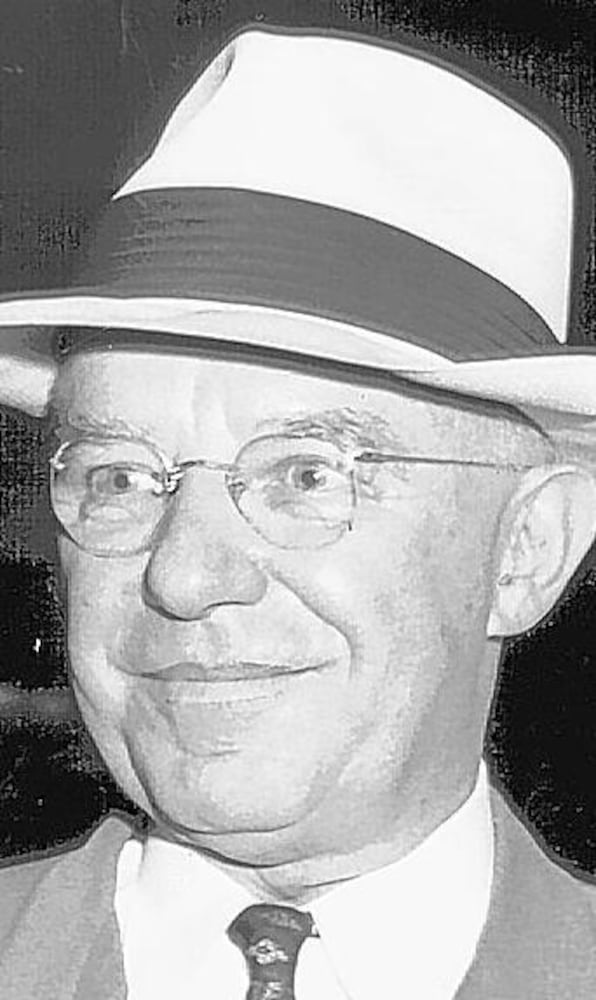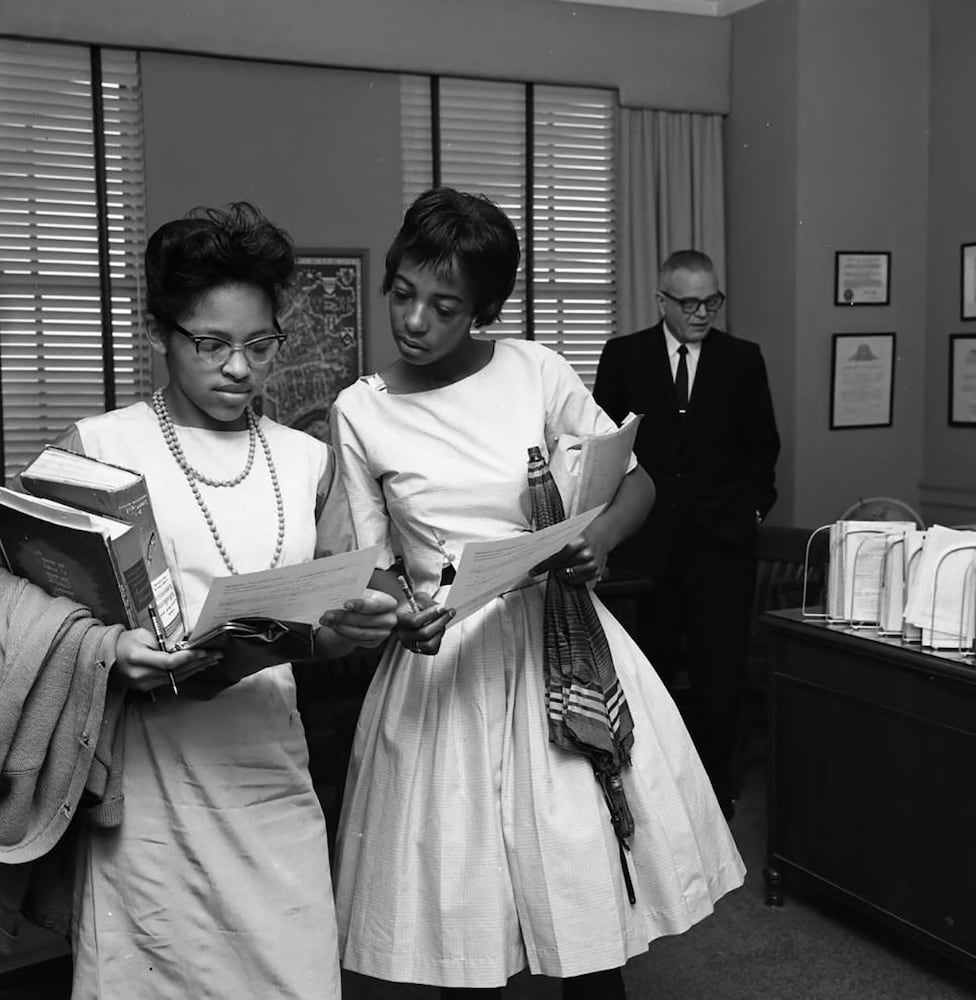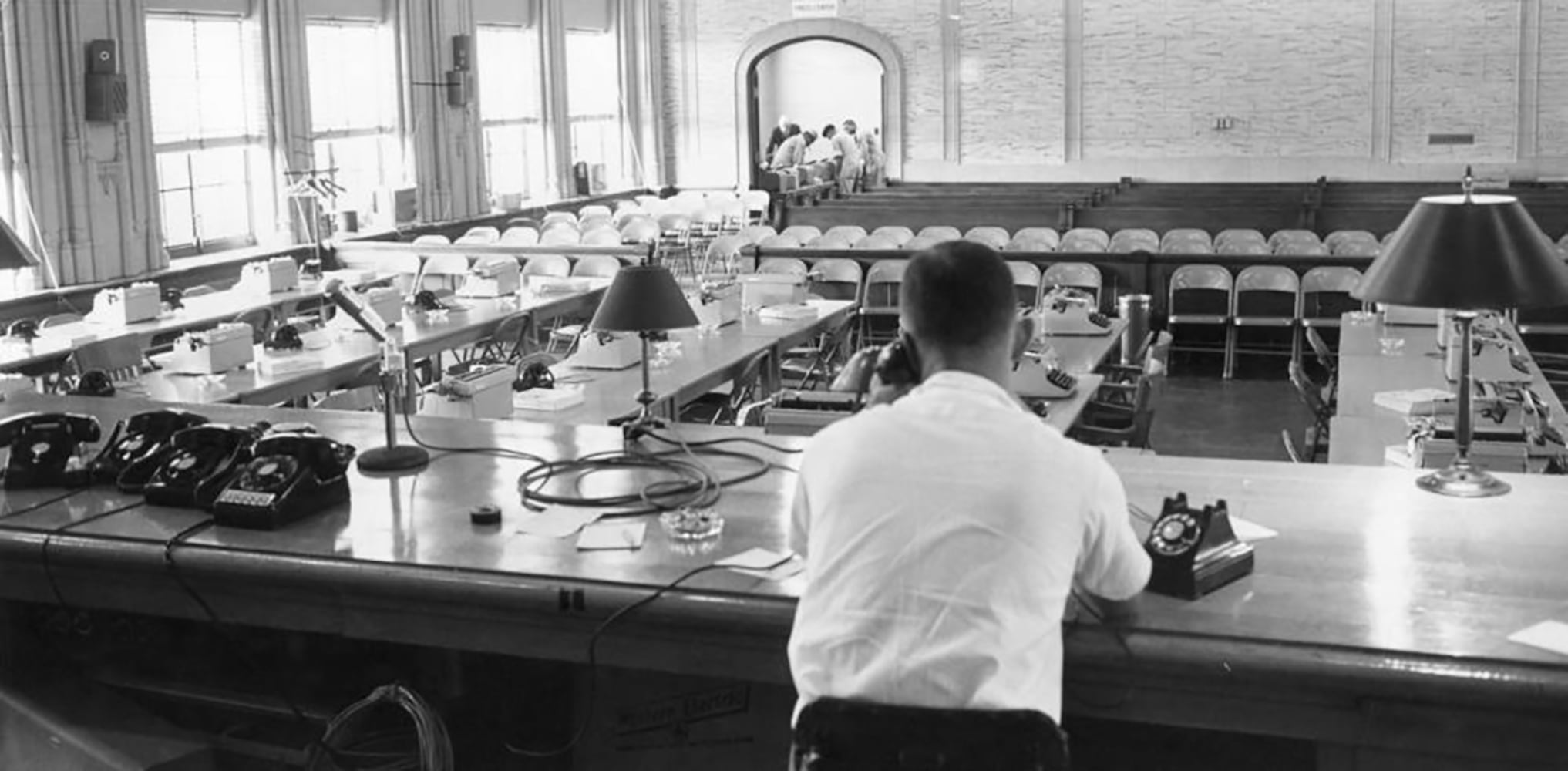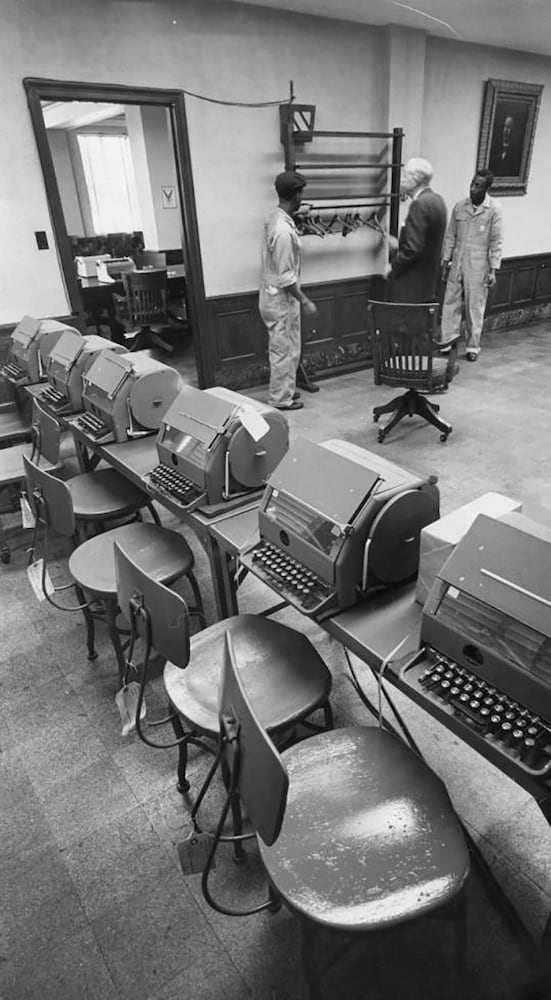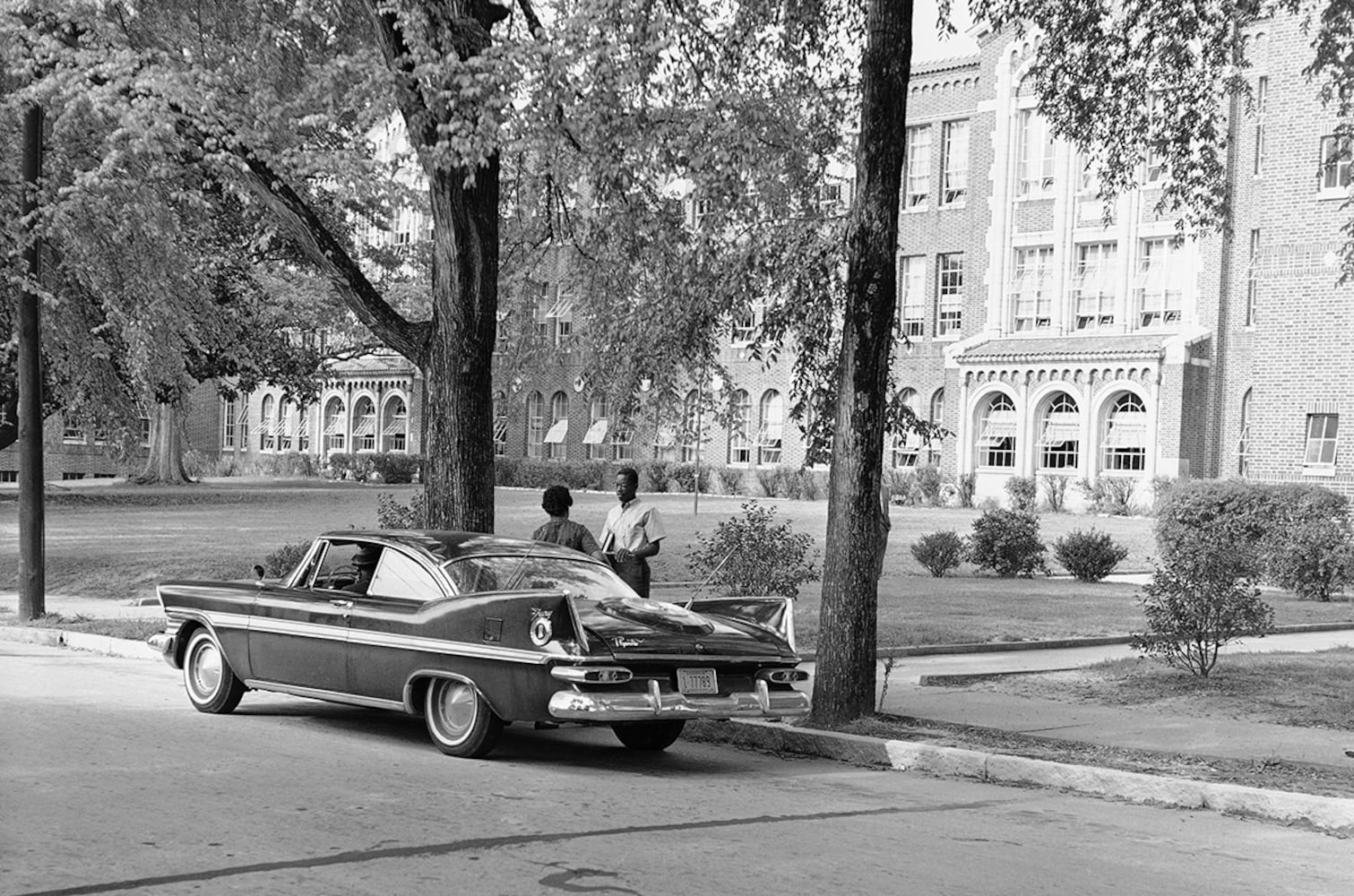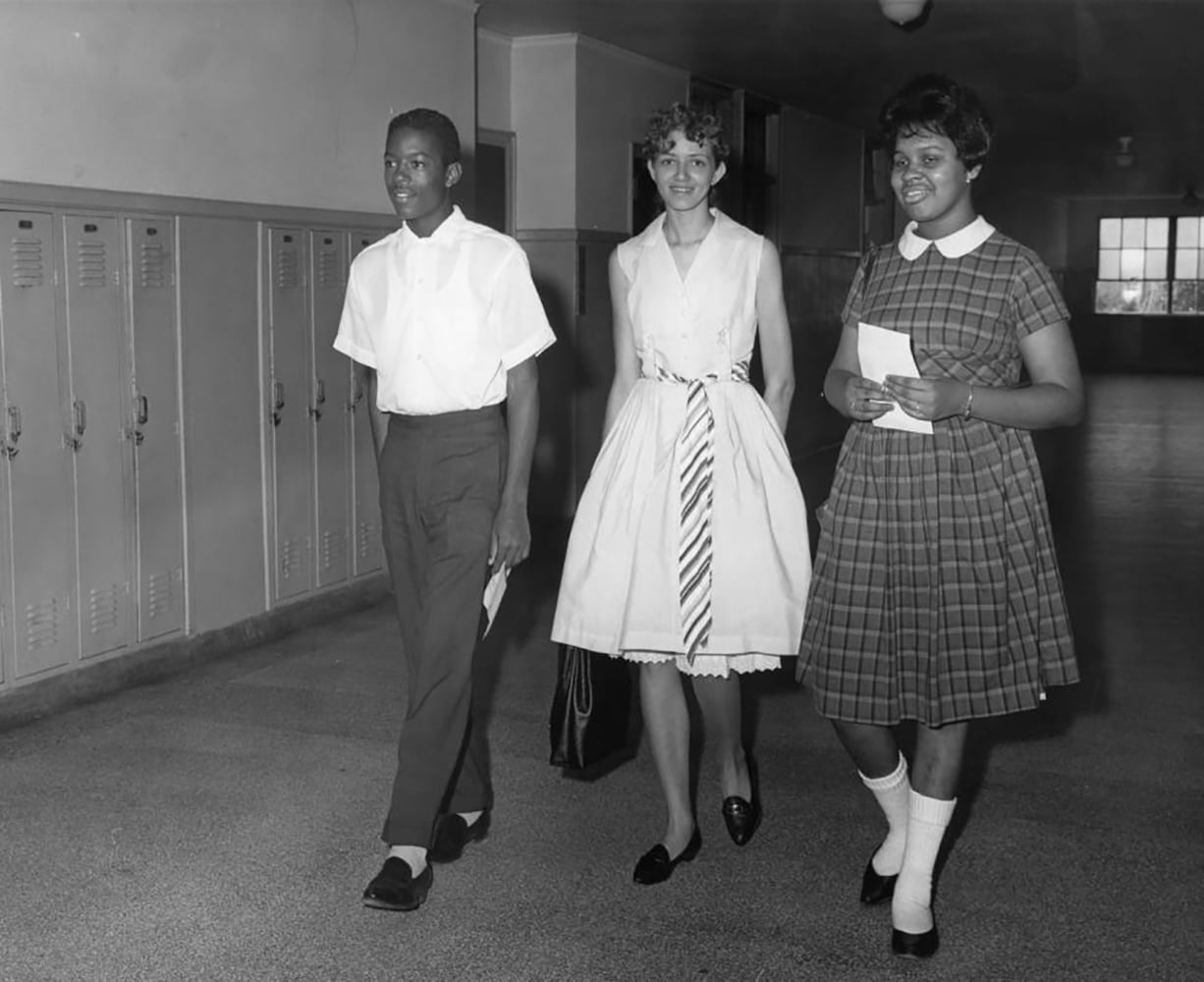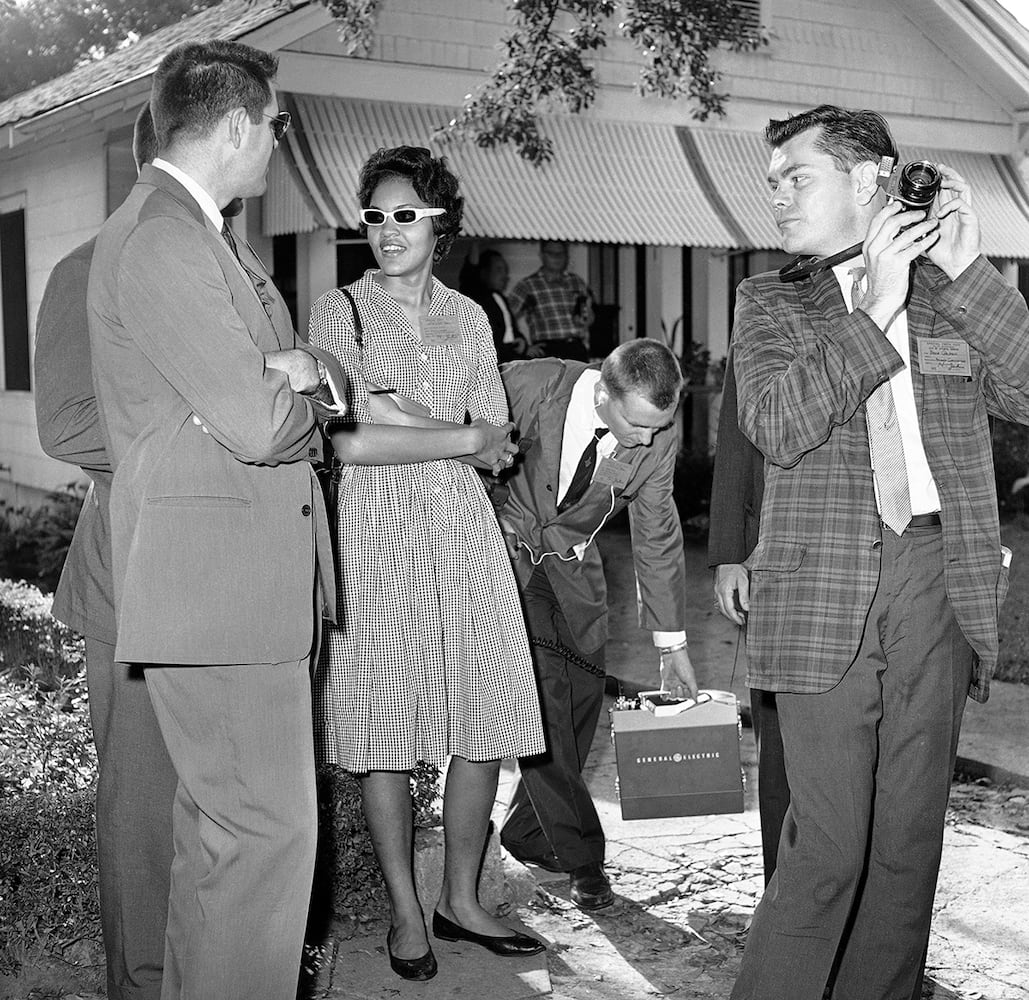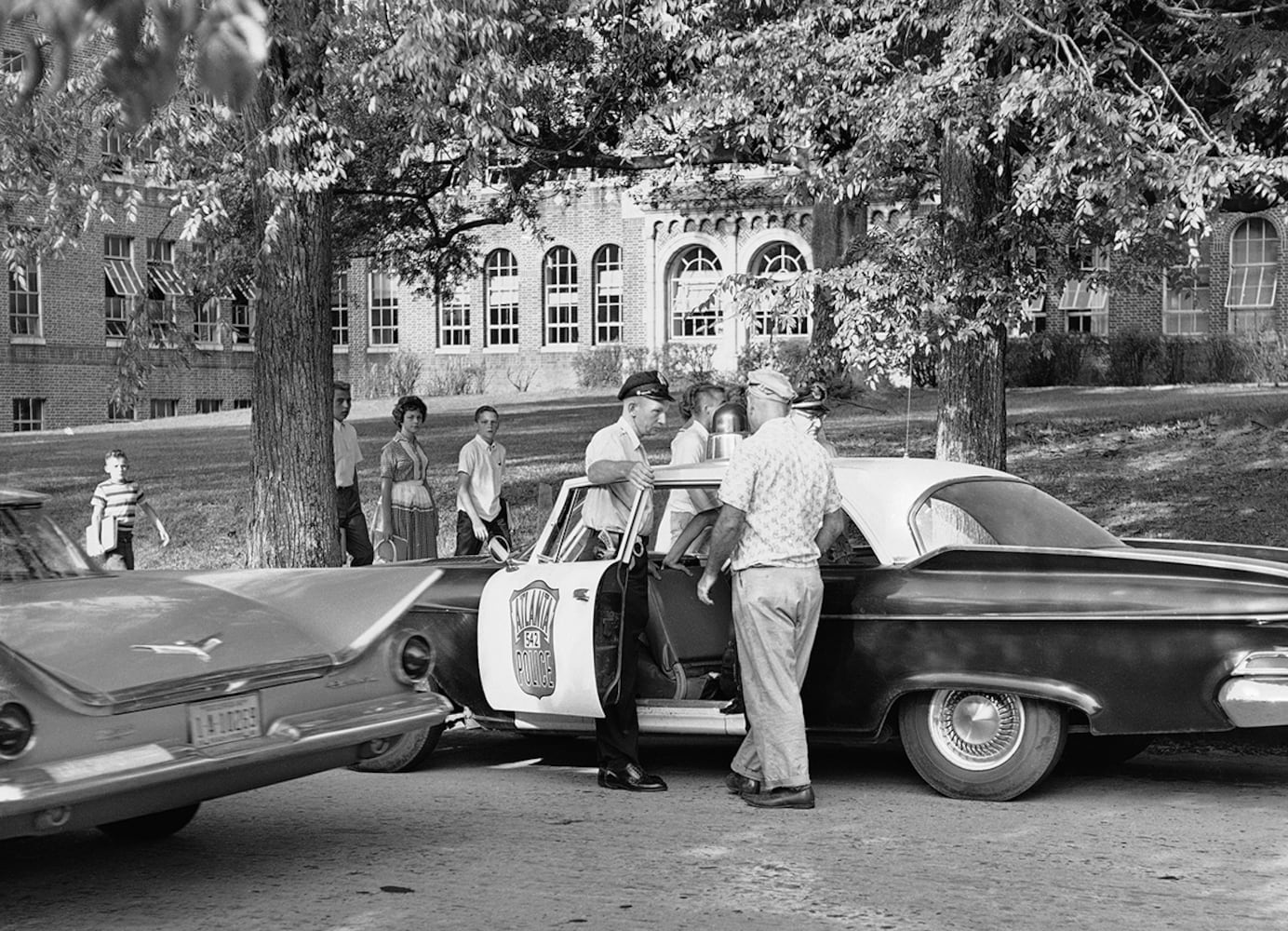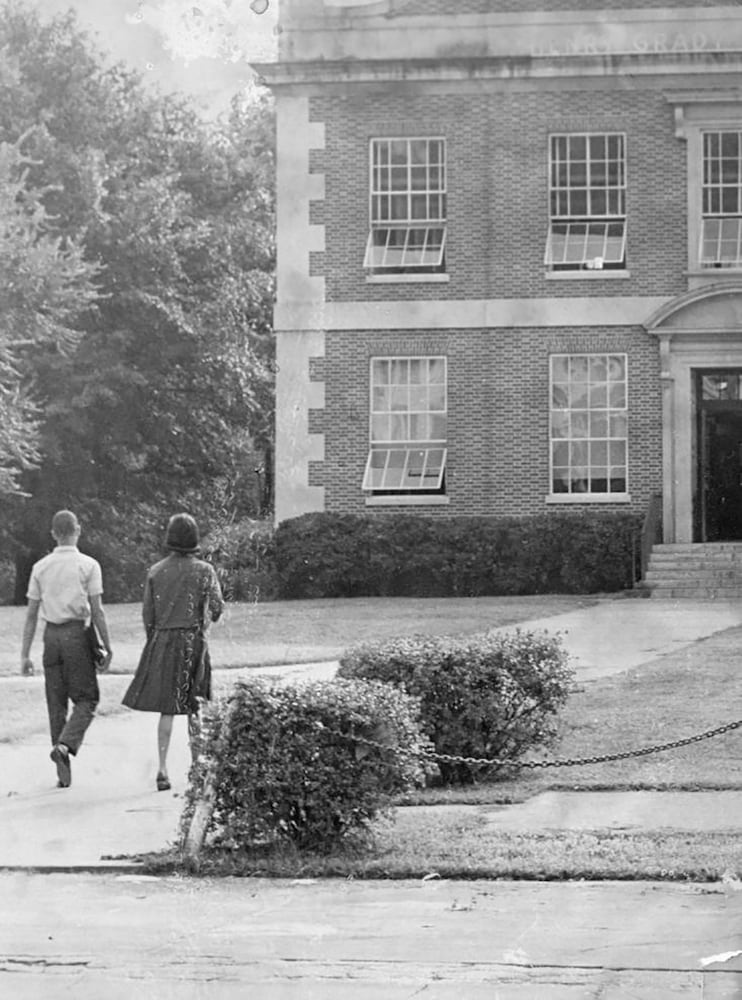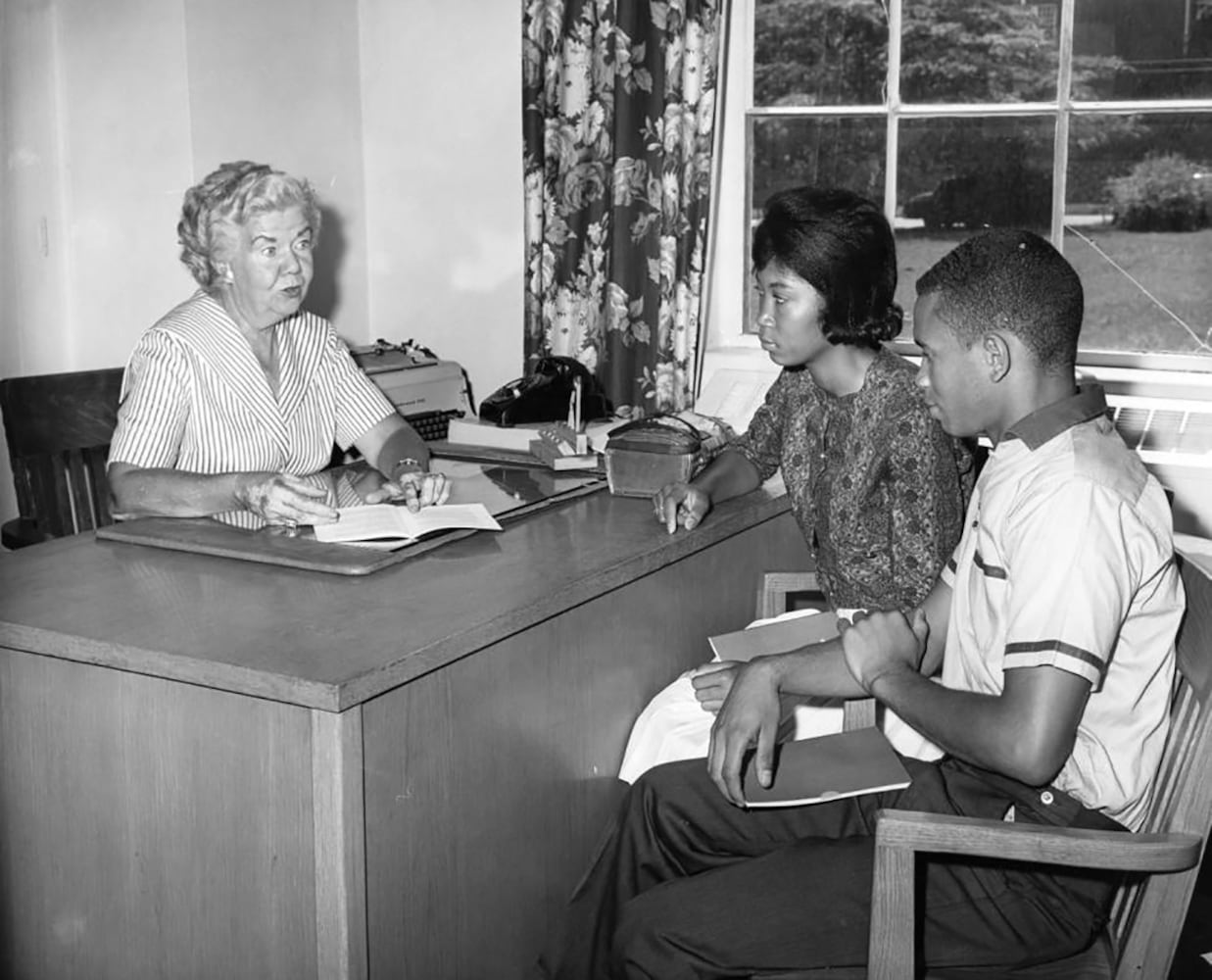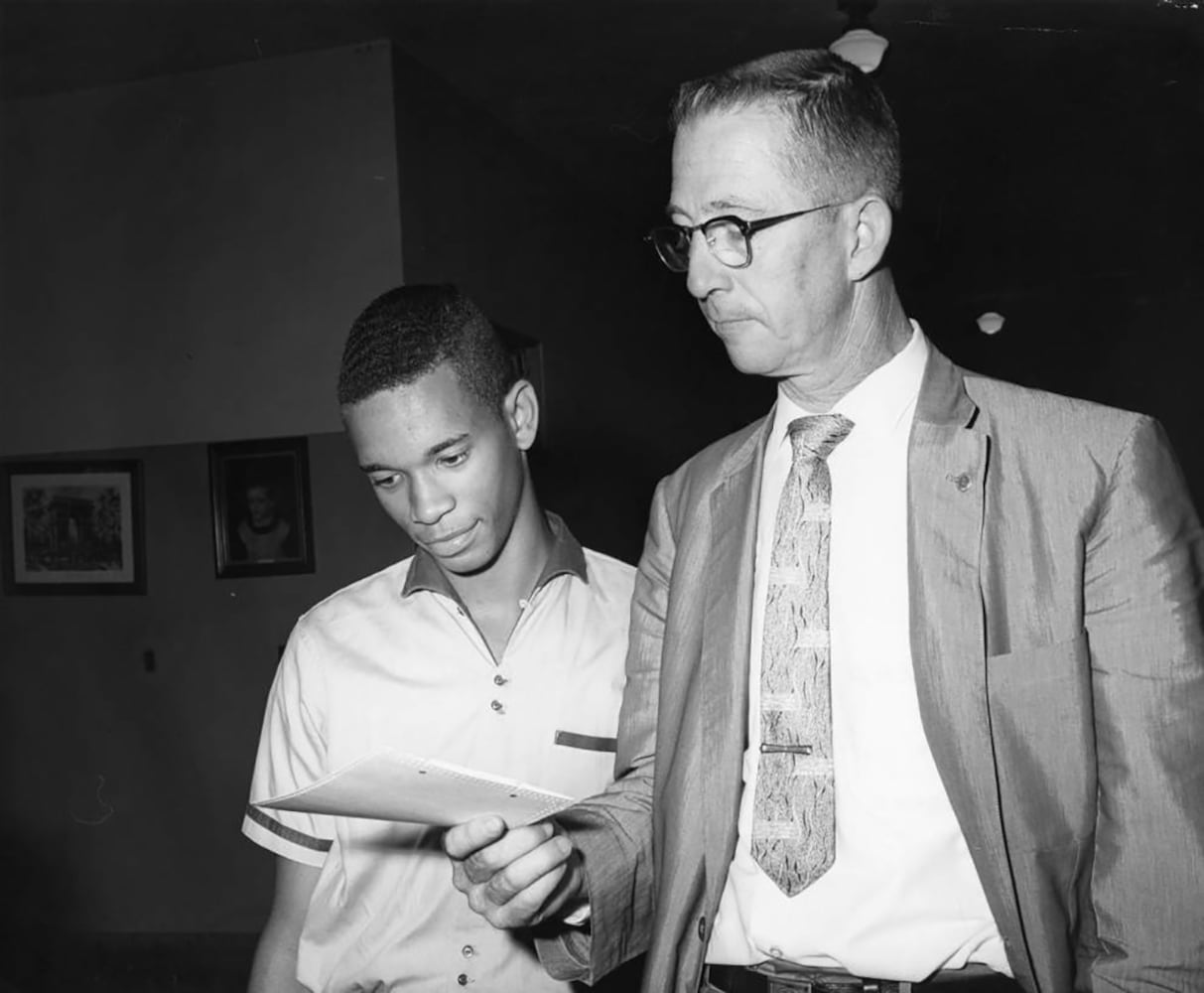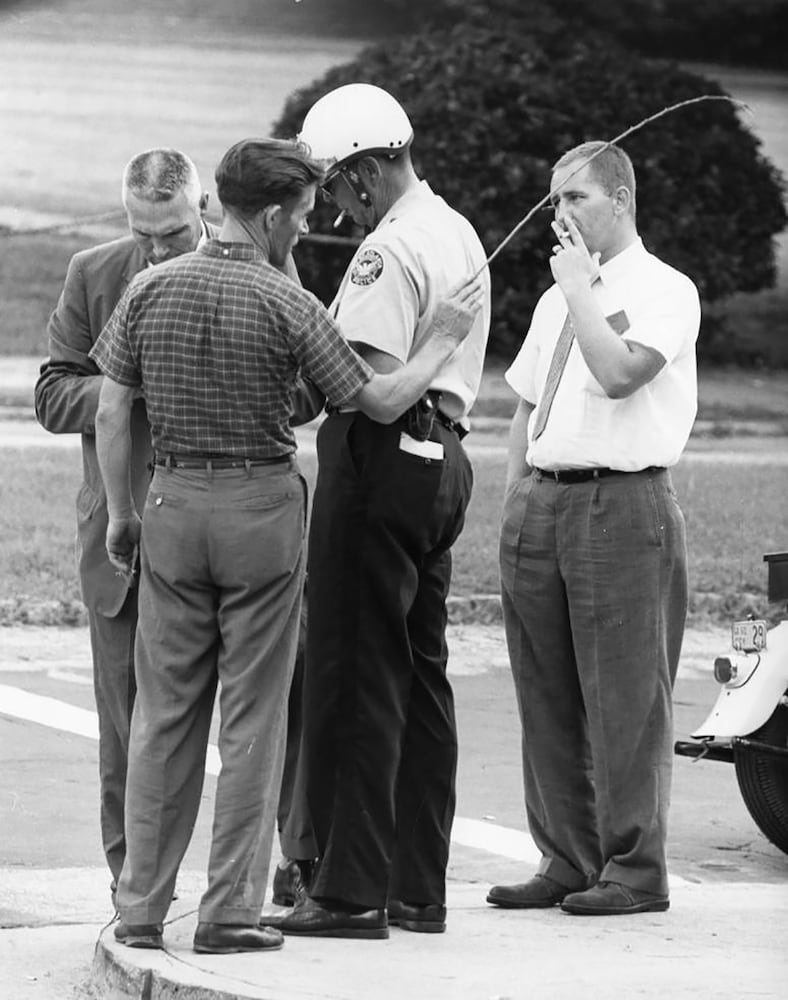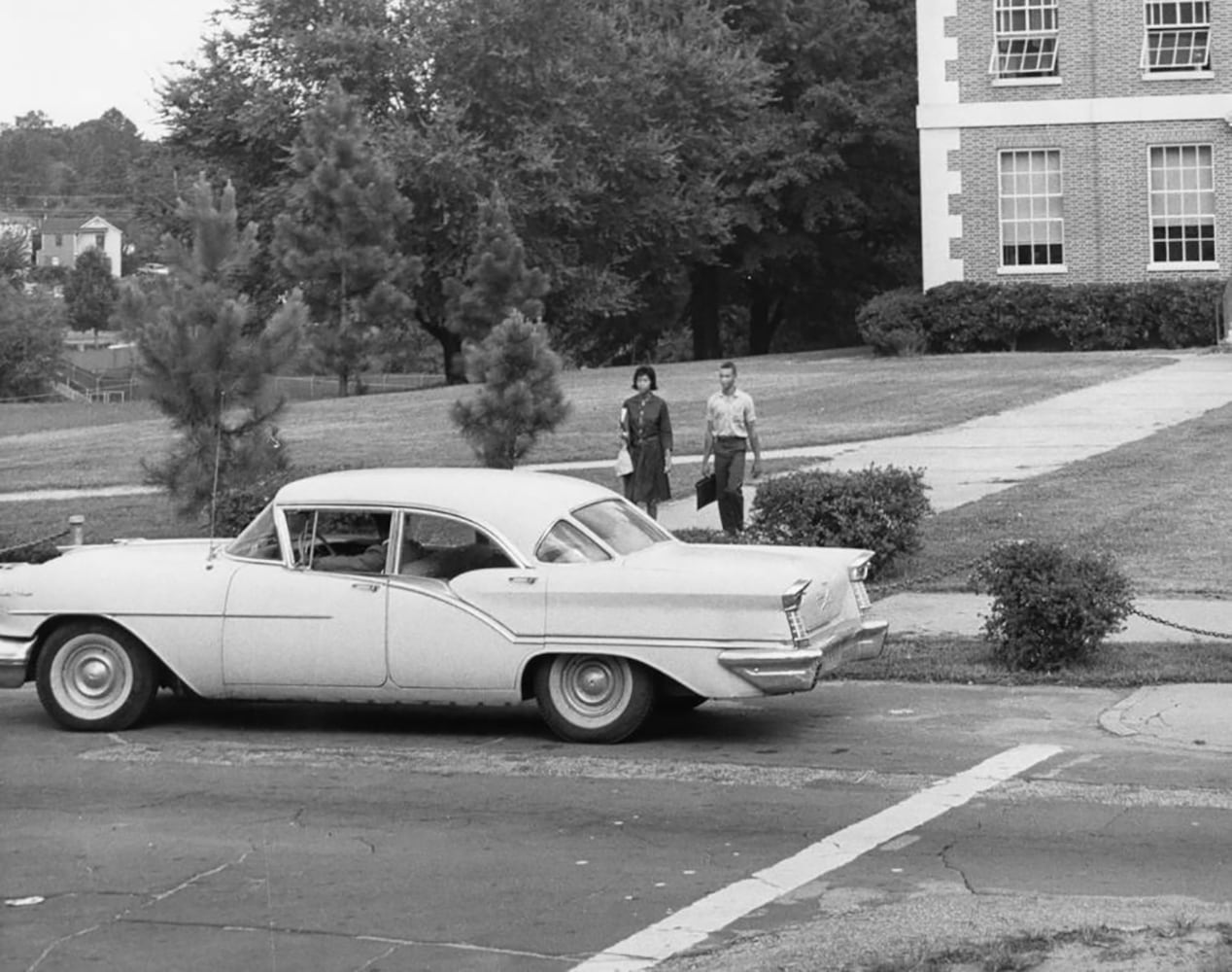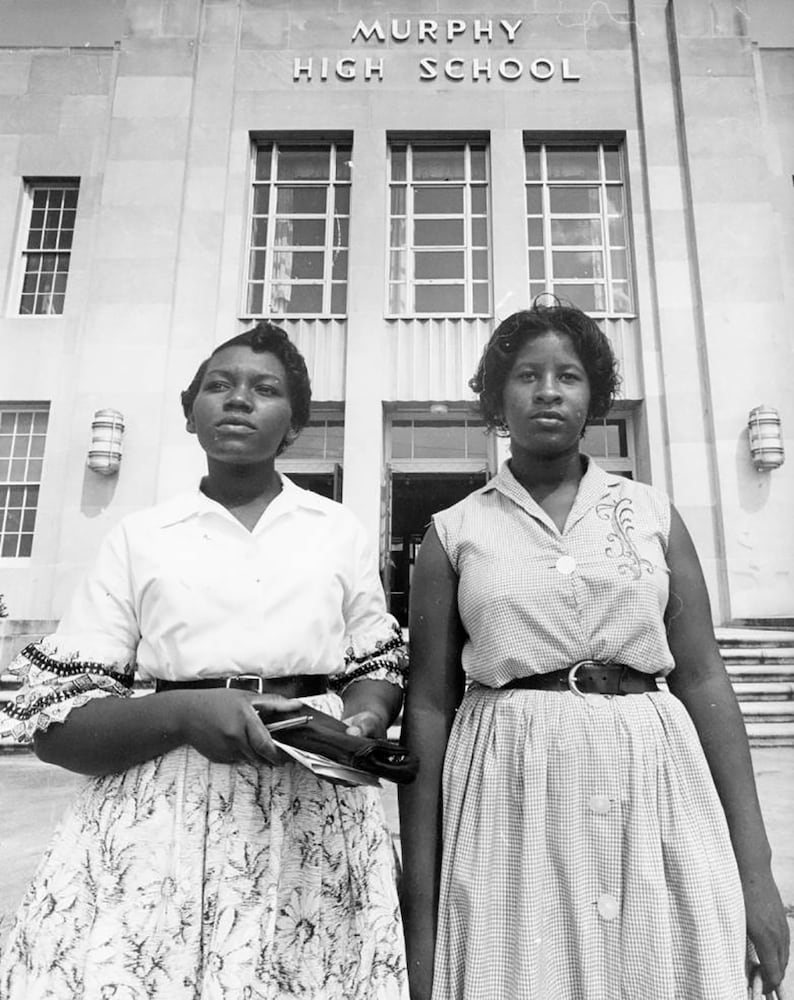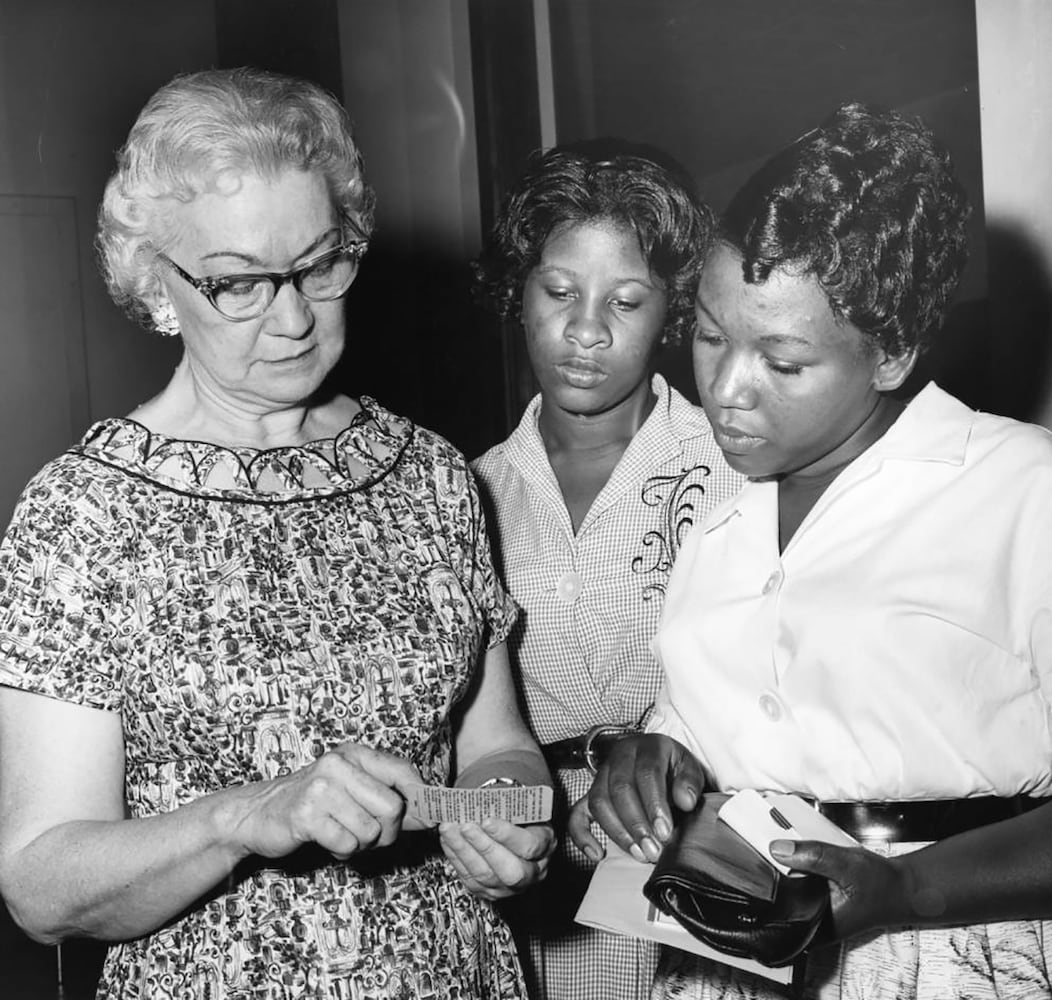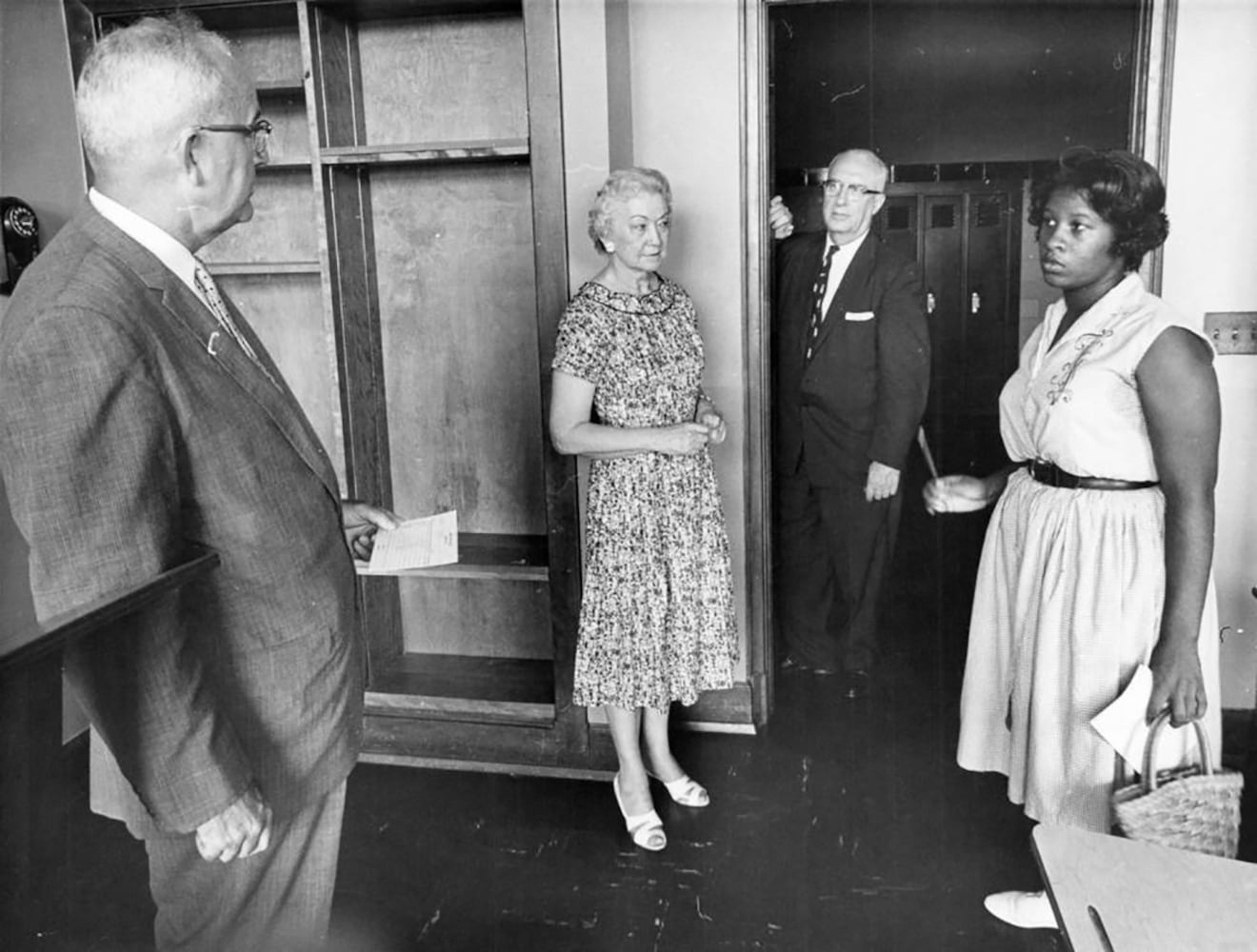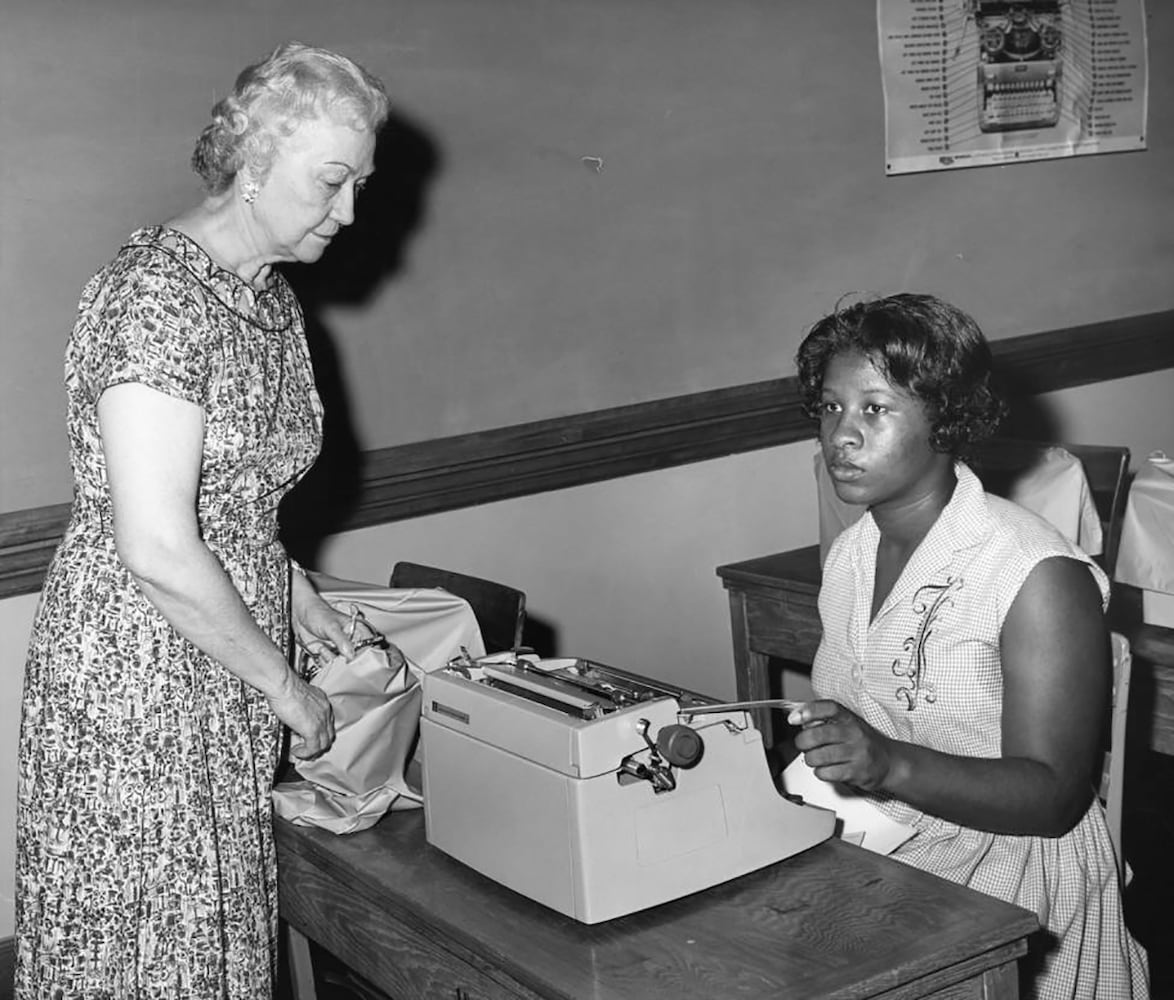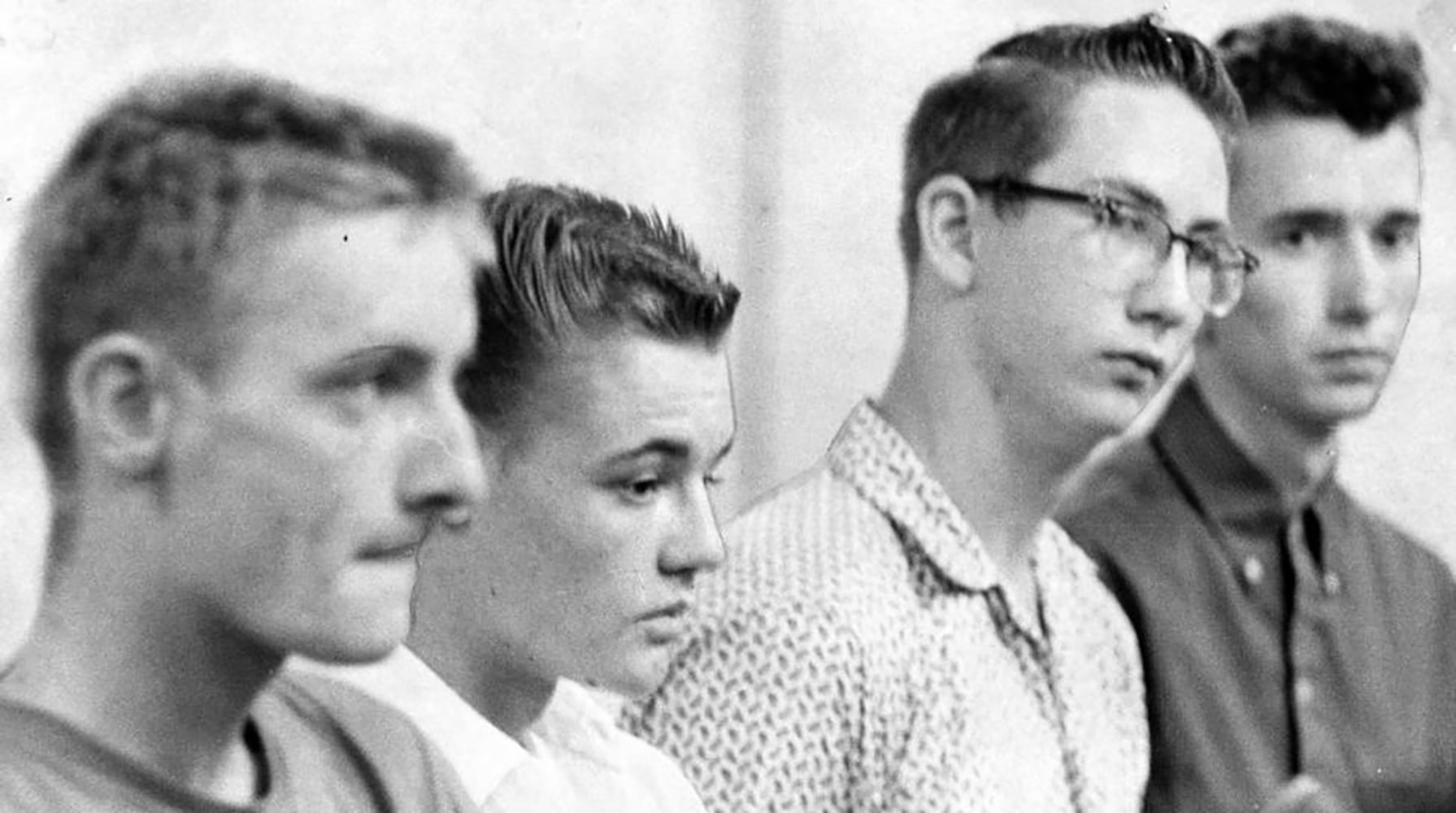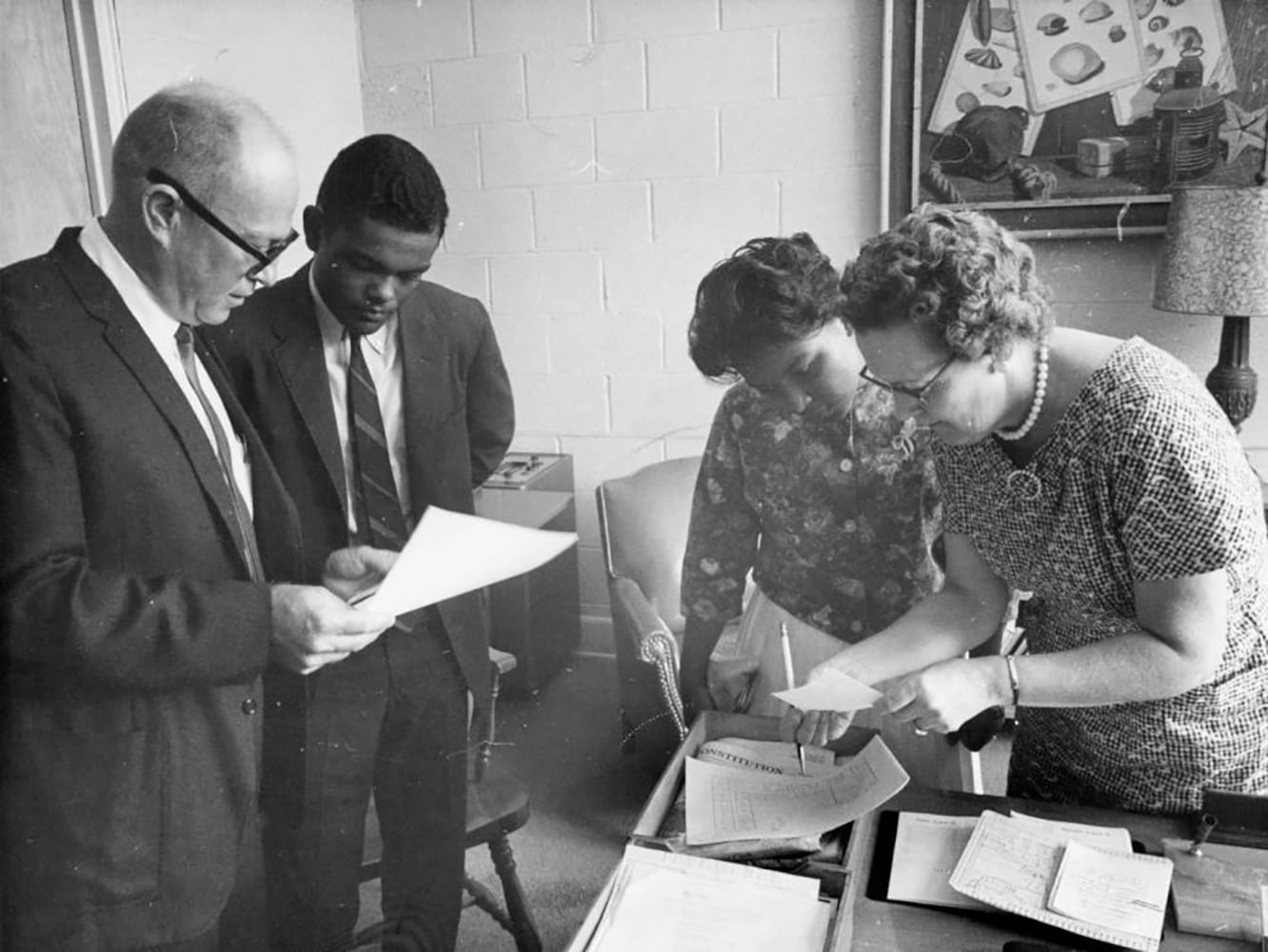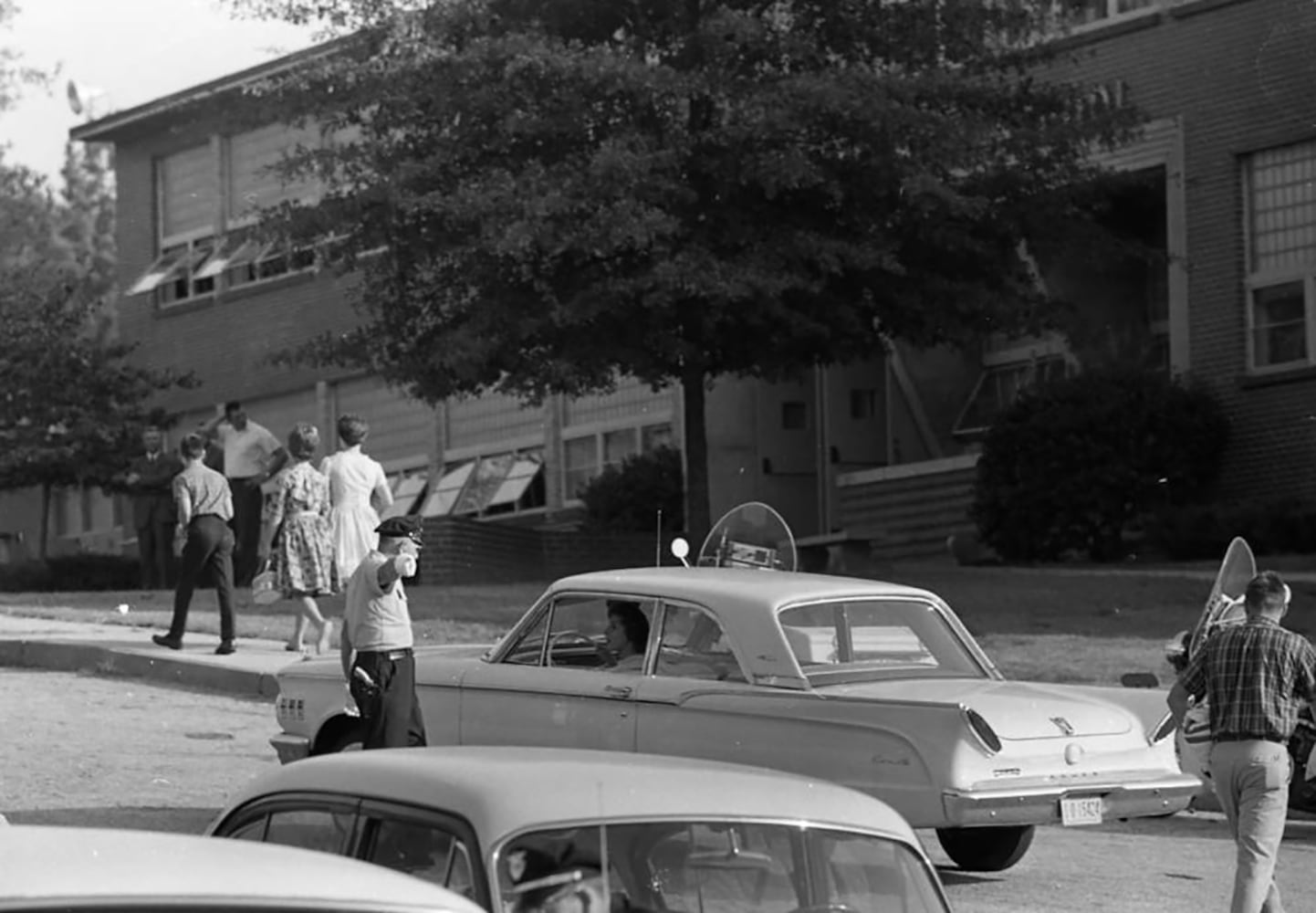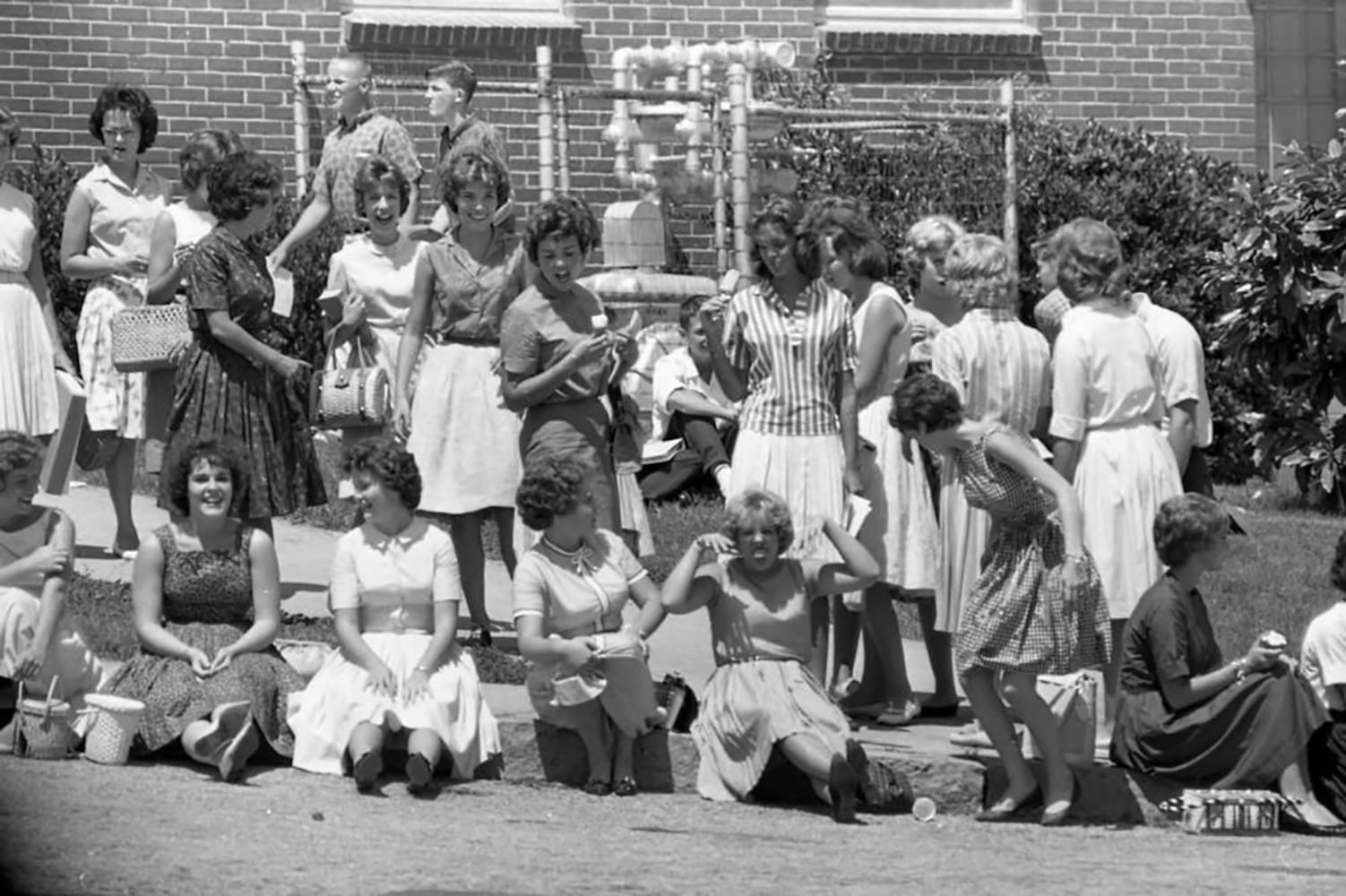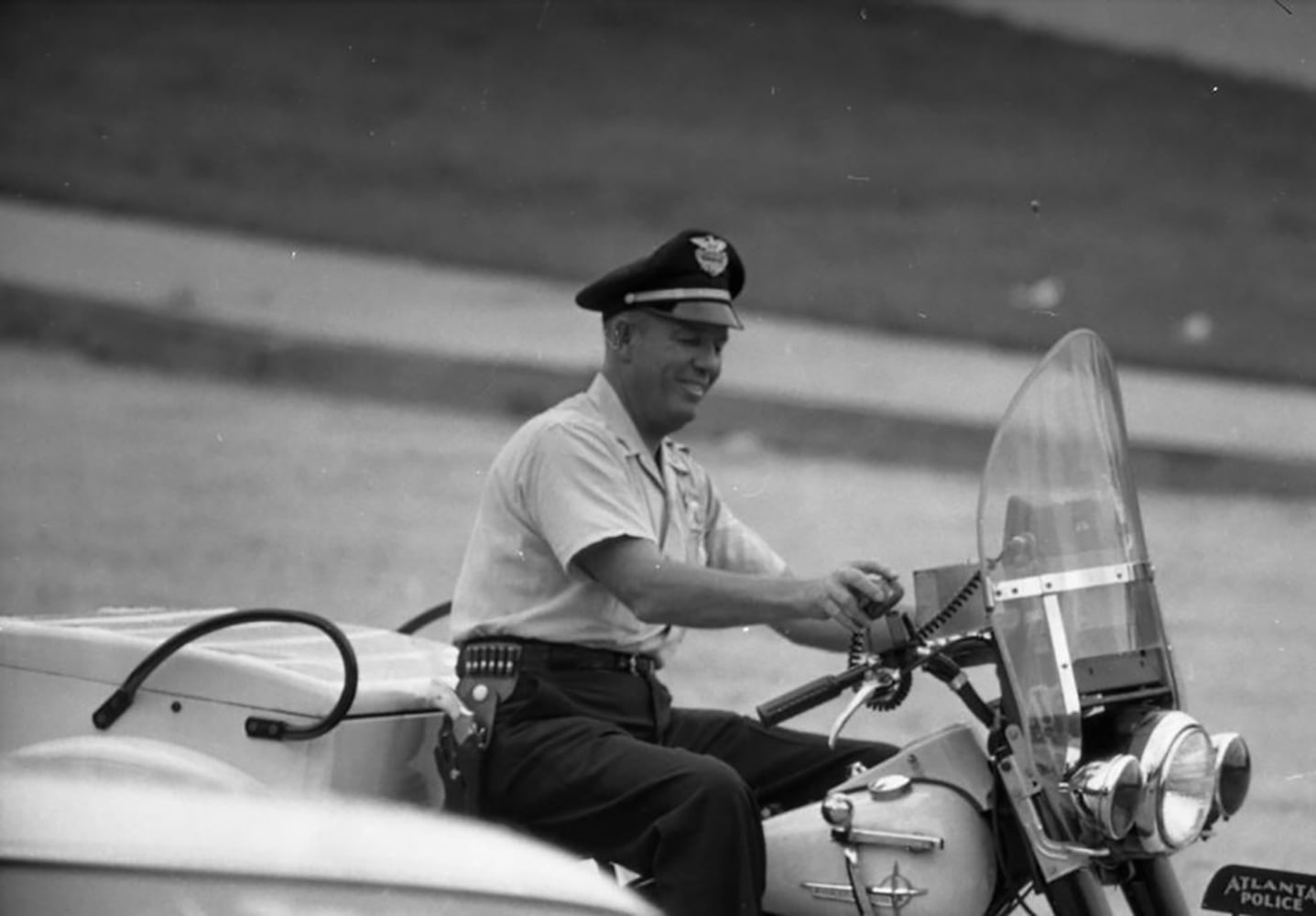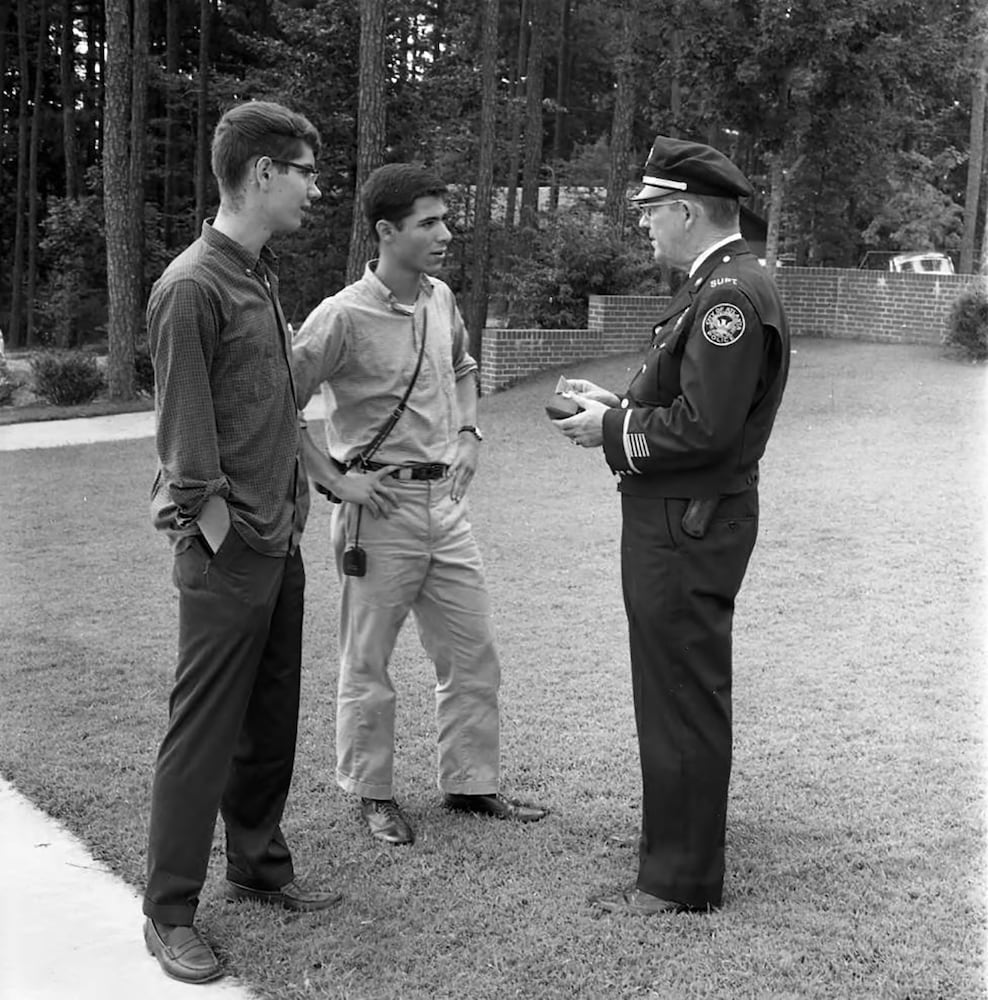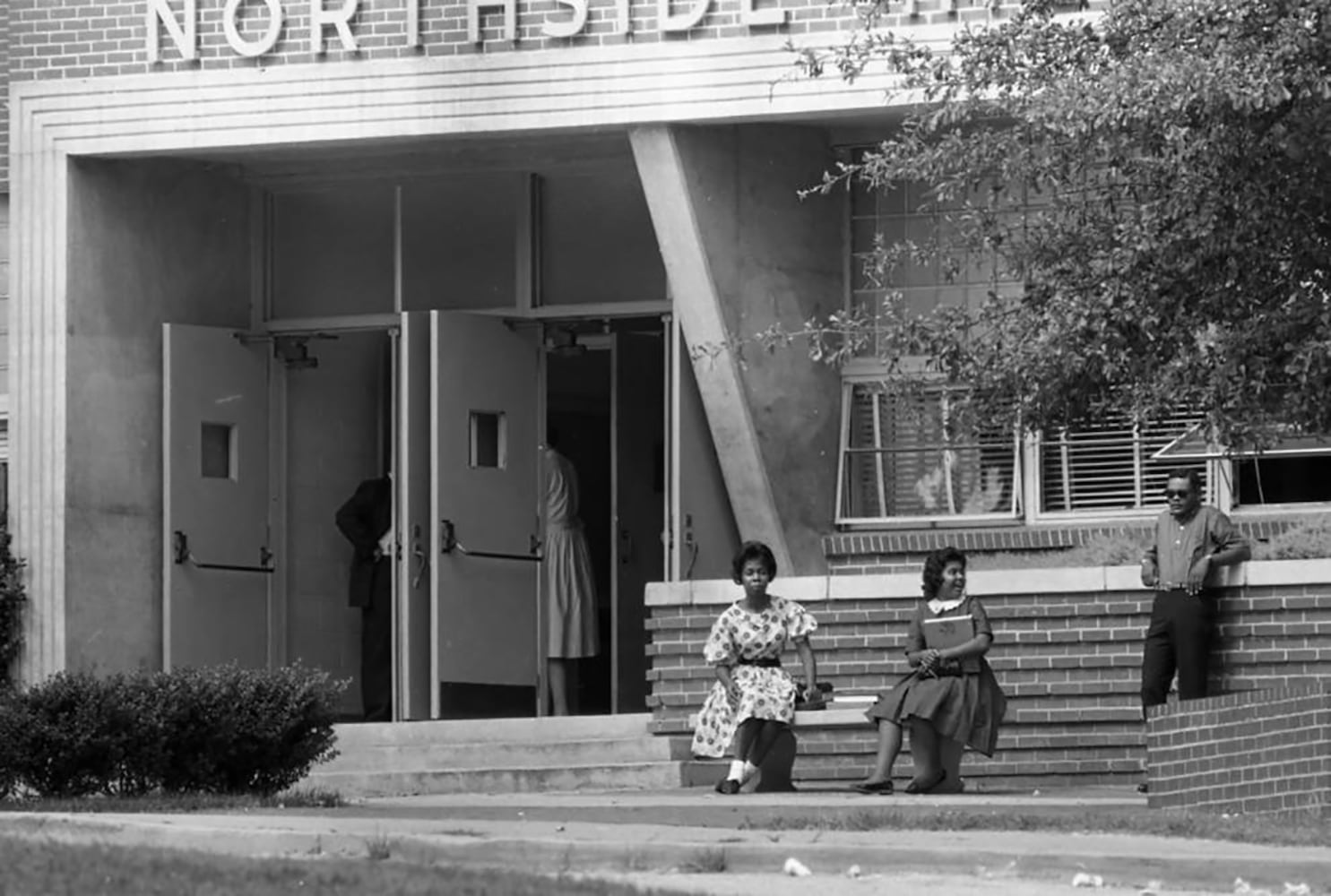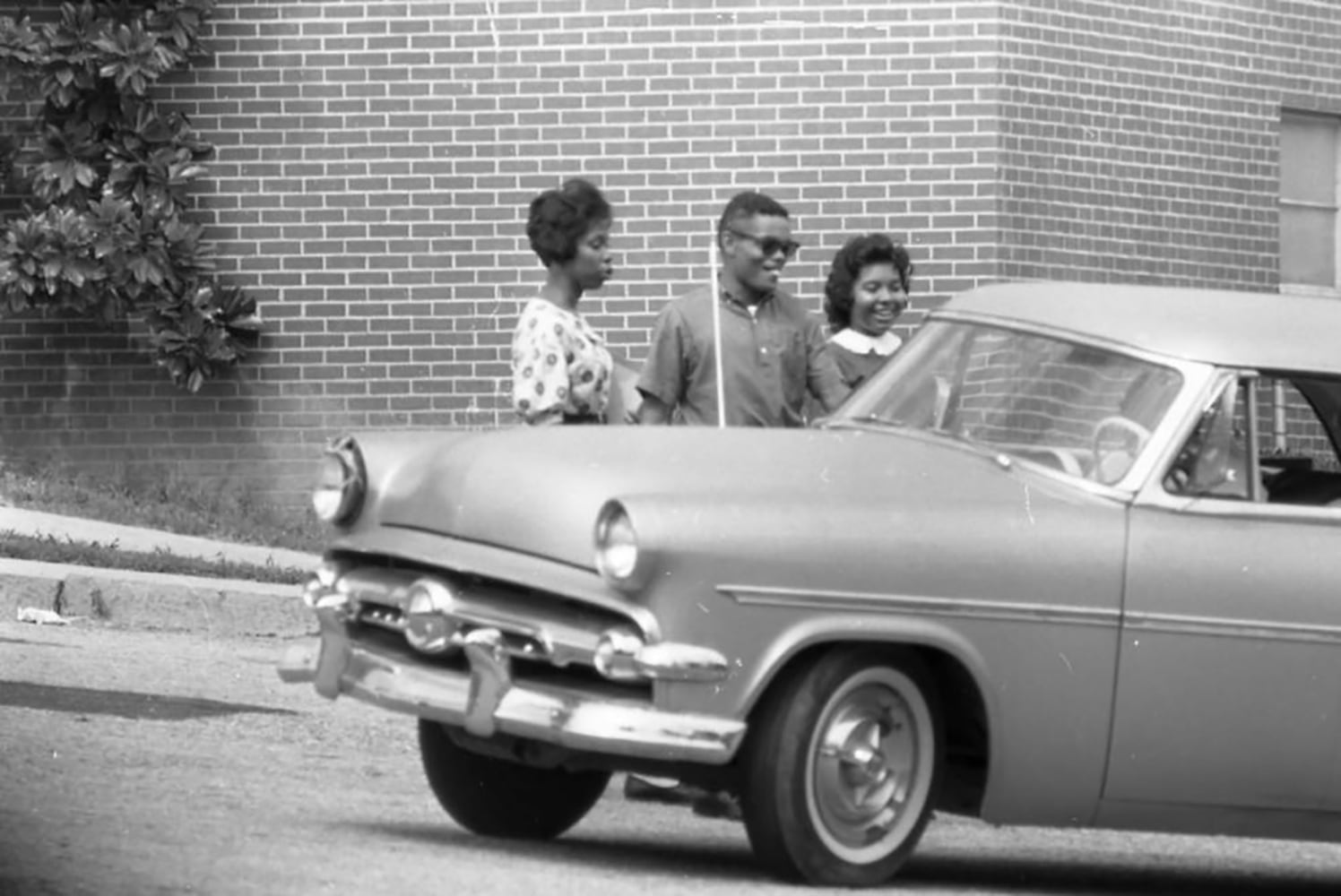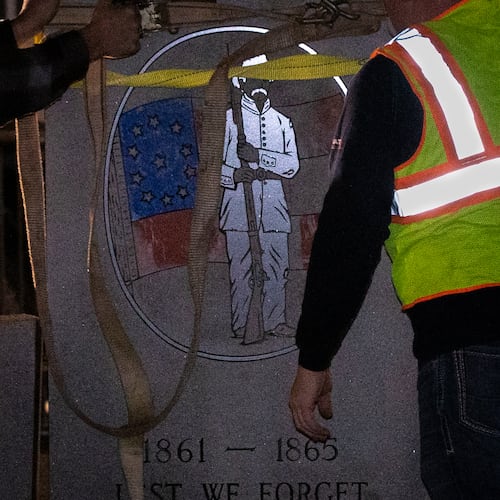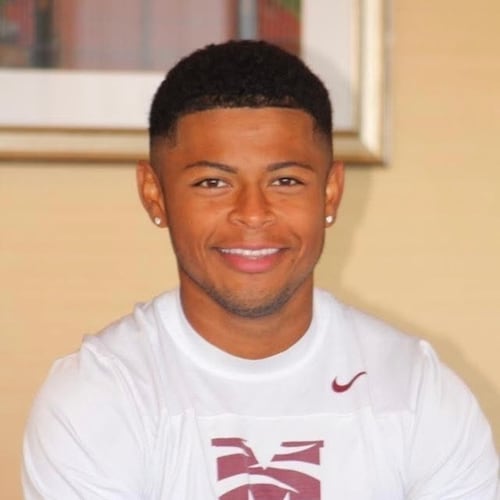It took more than a decade, but the Brown v. Board of Education decision 70 years ago this month would eventually change American society. The U.S. Supreme Court’s decision was technically about schools, but it really addressed a much bigger question, the extent to which this country would hew to the inspiring words that forged a union: “We hold these truths to be self-evident, that all men are created equal ... .”
The scale of the change is difficult to measure in Georgia, in part because the response varied by place and time.
Rural Georgia reacted differently than urban Atlanta. And even in the city, there was no one narrative.
The handful of Black teenagers who were in the first wave of desegregation in the early 1960s had a different experience than the vast numbers who came after, when students rode buses across town to integrate schools a decade later. As the saying goes, there is strength in numbers.
The story differed in every school, in every classroom and in every interaction between individuals. The Atlanta Journal-Constitution reconstructed what happened by peering back in history through the eyes of a handful of people who lived through it.
A ‘huge responsibility’
The desegregation of Georgia’s schools started in a downtown Atlanta diner.
Before the fall of 1961, when Martha Ann Holmes became one of the first Black students to attend a white public school in Georgia, she was immersed in a kind of cultural training program.
A white woman volunteer with the Atlanta League of Women Voters would pick her up at her home and drive her to the ornate Magnolia Room in the Rich’s department store. There, they just talked.
It was part of a carefully choreographed rollout intended to make the people of Atlanta look better than the shabby mobs that had assailed Black children in places like Little Rock, Arkansas.
“It was just to help us feel more comfortable being with white people,” she said recently. Now 80, and with the surname Jackson, she said that as far as she knew, the other eight Black students who desegregated four Atlanta high schools with her that year got the same training.
She’d had only superficial exposure to white people as a kid growing up in the Reynoldstown neighborhood. She’d played in the backyard with two young boys who lived in the home of a white family where her great-aunt did the cleaning. And she’d passed by white neighbors while walking to the bakery or to her segregated high school in the Old Fourth Ward neighborhood.
She was a good student, and ambitious. So when the school board announced it was accepting 10 students to desegregate some schools, she applied. One quit the program and was not replaced, so Martha and the others have gone down in history as the “Atlanta Nine” who desegregated four white high schools.
Martha and another Black teen, Rosalyn Walton, were assigned to Murphy High in East Atlanta. It was about 2 miles from Martha’s home. The Atlanta police drove them at first, and she remembers an encouraging Black detective who told them he was proud.
Unlike Little Rock or New Orleans, there were no angry mobs outside the school, so after a few weeks, the police stopped driving them. Jackson recalled a white woman who cursed at them as they walked past an apartment building, but their trips were otherwise peaceful.
It was less pleasant inside Murphy High though.
The teachers, all of them white, were welcoming and treated her fairly, Jackson said.
But some boys bumped her hard in the hallways. One in the back of a classroom threw wire nails in her hair. Someone put a note in her locker: “go back to Africa jungle bunny,” it said.
At lunchtime, the two Black girls sat alone in the cafeteria. Finally, a few months into the school year, a younger white girl turned up one day and asked if she could sit with them. They didn’t talk much though. The lunch period was brief.
Some, including the class president, treated them kindly, but usually only when others weren’t looking.
“If you saw them out somewhere, one of the shopping centers when they were with a group of friends ... you could tell they didn’t want you to know them,” Jackson said.
She said desegregating a school was a “huge responsibility” for her and for the other teenagers. One of them, a girl who’d enrolled at Northside High in Buckhead, quit after three months, returning to her segregated school. She told a child psychiatrist that it was due to “emotional exhaustion.”
“You could tell they didn't want you to know them."
That psychiatrist, Robert Coles, frequently interviewed Martha and the other eight Black students as part of his research into their experience of desegregation. He also followed a dozen of their white classmates, half of them from segregationist homes, according to a 1963 article in Time.
The magazine reported that some white students were virulently racist, telling Coles that they felt physical revulsion near a Black person, “like dirt being rubbed on you.”
Yet Coles said he’d found humanity among white students too, noting what some wrote in Martha’s yearbook.
“I only hope that you will forgive those of us who have been mean and ugly,” wrote one. “Martha, I cannot tell you how much I admire your courage and determination,” wrote another.
In a column published by The Atlantic that same year, Coles wrote about the pressure of conformity on the white teens. One of the Black girls who had complained to him about her loneliness and the occasional insults told him that 15 white students asked to sign her yearbook on the last day of school.
“Please forgive me for not being friendlier this year,” one of them wrote. “I am truly sorry for my silence, but I’m sure you can understand why.”
Murphy High’s enrollment shifted from white to Black as the area changed. The school eventually was renamed after Alonzo Crim, who had become Atlanta’s first Black superintendent in 1973. It has since been rebranded again as the Phoenix Academy, for students with academic, socio-emotional and behavioral challenges.
From Rebels to Jaguars
Near the end of August 1961, a handful of armed men in suits escorted two Black teenagers through a side door at Brown High School, taking them to their lockers and then to their classrooms.
Brown High in Atlanta’s West End neighborhood was named after Joseph E. Brown, the governor of Georgia during the Civil War who opposed the abolition of slavery. Athletes there wore uniforms branded with the word “Rebels.” No Black students had attended there before.
A similar scene was unfolding at three other Atlanta high schools that day. On Aug. 30, school segregation had run its course in Georgia.
The white students at Brown were waiting in the auditorium as their two new Black classmates settled in. Thereafter, everyone was on their best behavior, said Susan Turner, who was a new math teacher there on that day and now lives on the Georgia coast.
Turner, who went by Ms. Johnson at the time, offered a simple explanation for their behavior: “The students had seen Little Rock.”
By that, she meant the city in Arkansas that had filled television screens nationwide four years earlier with scenes of a white mob, yelling and spitting, that had greeted nine Black students as they approached a white high school for the first time.
Mary Boyette, who graduated from Brown in 1964, said she and the rest of the white students had been prepared for that day.
“We were told we better be on our best behavior, that they were starting what they called integration at the time, sending some Black students into the white high schools and we better treat them nice,” said the Brown graduate, who now goes by Corbett and lives in Atlanta’s northern suburbs.
Most of the white students treated the newcomers well, she said, though she remembered one exception soon after that first day. “A couple of white kids threw food at them in the cafeteria,” she said, adding, “I think they got in trouble, as they should.”
School yearbooks show a slow shift in the school over the next half decade as Black families trickled into the white working-class community.
By 1971, when Debbie Hoefler was a freshman there, half or more of the students were Black.
She met her best friend then and now, Cynthia McLennan, in homeroom. They later took drama class and sewing together and share many of the same memories of a once-segregated community shifting gradually, and then quickly, from white to Black.
“We were told we better be on our best behavior, that they were starting what they called integration at the time."
Cynthia, whose surname is now Green, had deep roots in the West End. Her grandfather had been a leader in the pipe and steam fitters’ union, she said. When he died in 1960, her mom found a Ku Klux Klan robe in his closet.
Yet she said her mother wasn’t raised to judge people by their skin color and didn’t raise her and her sister that way.
The family dined at the Pickrick Cafeteria near Georgia Tech, until the summer of 1964. That’s when the proprietor, a future Georgia governor named Lester Maddox, used an ax-handle-wielding throng to turn away Black activists who were trying to desegregate his establishment.
“He had really good fried chicken and biscuits,” recalled Green, who was a little girl at the time. “I would say to my parents, ‘Can we go to the Pickrick?’ And finally, my parents said no, we’re not going back there.”
Debbie, whose surname is now Schulz, said she led a largely segregated life before elementary school. The only interaction with Black people she could recall was with a woman on a city bus who’d given her a cookie.
So when the city desegregated the pools in the early 1960s, she stared at the Black teenage boys hanging out in the deep end of one near her home.
“They just looked like they were from outer space,” she said.
As the duo neared the end of high school, the demographics of the West End had reached a tipping point, then passed it. The 1972-73 yearbook contains the faces of only three white students besides Cynthia and Debbie.
Both recall a breakdown in discipline. Someone intentionally knocked the books out of Debbie’s hands in the hallway once during her senior year. And she watched a Black student hit one of the few remaining white teachers. “She was just angry at the teacher about something,” Schulz recalled, “so she just slapped her.”
Green recalled a large Black boy who hovered around them in a protective way.
The pictures of those five white students were taken before Cynthia’s home was broken into. Soon after, her family moved to Clayton County, where she finished her senior year.
By then, the school had picked a new mascot. Athletes, all of them Black, wore uniforms that said the “Jaguars.”
Silence means consent
Credit: Miguel Martinez
Credit: Miguel Martinez
Phyllis Jackson-Smith recalls the harrowing story, as if it had happened in slow motion.
She was 6 or 7 at the time, playing Ring Around the Rosie in the front yard. Her mother rose slowly from her seat on the front porch, a look of terror on her face as a vehicle approached.
“I just remember seeing the barrel of the gun sticking out the window,” Jackson-Smith, now 74, remembered.
The white men missed. Their speeding car hit a bump in the street and the vehicle bounced when the gun fired. The bullet hit the attic window.
Despite this incident, and the cross that once burned in their neighborhood, Phyllis Jackson told her father in the summer of ‘64 that she wanted to attend the white high school. Desegregation had been unfolding across the city for several years, and now, for the first time, Black teenagers would be admitted to nearby Southwest High.
Her father, Leonard Jackson, played a role in that: He was among the plaintiffs in the NAACP’s 1958 Calhoun v. Latimer lawsuit, which led the Atlanta school board to comply with the Supreme Court’s Brown decision. She wanted to make him proud.
Their cozy neighborhood of Black families in Cascade Heights, built on farmland her grandfather had owned, was surrounded by white families in new ranch houses built after World War II.
Phyllis and the other Black kids weren’t allowed to attend the nearby schools because those were for white kids. Instead of walking a mile to the neighborhood elementary school, they’d had to ride a bus more than 7 miles to a segregated school on County Line Road.
“I just remember seeing the barrel of the gun sticking out the window."
During her freshman year of high school, Phyllis had to wake up at 5:30 a.m. so she could get out the door in time to catch the 6:37 a.m. city bus, then transfer to another before walking a half mile from the stop to all-Black Turner High 4 miles away. Meanwhile, the white kids had been hopping on a school bus around 7:30 a.m. for the 2-mile ride to Southwest High. And when she got to Turner High, Phyllis endured crowding, with as many as four dozen kids per classroom.
The teachers were dedicated but the books were shabby, and she had to share them, the frogs she was given to dissect had already been cut up, and there were too few beakers to go around in science class.
So off Phyllis went to Southwest High for her sophomore year, along with her younger sister. They and the five other Black teens who desegregated the school became known as the Southwest Seven.
She was surprised when each of her teachers passed out new books to every student, books that they could take home.
But that’s not the only thing she remembers.
There were the racial slurs in the hallways and classrooms. There was the school bus driver who shut the door in her and her sister’s faces and drove off without them.
And she remembers how someone threw something at her forehead during Glee Club, drawing blood, and how the white teacher ignored it. And there was the time the teacher for another club they’d joined changed the meeting location without telling them, though the white kids knew where to meet. She was a target in the cafeteria.
“Whatever they were eating, those boys would throw it at me,” Jackson-Smith recalled. At least once, she left soaked with milk.
“My tenth grade year was absolute hell,” she said.
“Whatever they were eating, those boys would throw it at me."
It wasn’t all terrible though.
When she took that hit to the forehead, an outraged white girl yelled at the teacher to do something about it.
Jackson-Smith said this girl was one of the few white people there who was friendly and would talk to her.
Another was in gym class, where a white girl decided the two of them should lie on their sides so it looked like they had hips.
Neither of those girls was from the South. Both were from military families, and they both soon moved away.
Though most of the white students were not overtly racist, most were silent when hateful things happened. And to her, silence meant consent.
Can you read?
Credit: arvin.temkar@ajc.com
Credit: arvin.temkar@ajc.com
On a September morning in 1965, Linda Florence and a dozen other students boarded a white van outside their high school, uncertain about what would happen next.
The driver took them to the school district office, and the terrified 16-year-old climbed the steps to a room where some adults were waiting.
The adults, all of them white, told her and the other teenagers that their segregated school would be closing. Older students could stay and graduate before the building was to be demolished in 1967, but younger students would be moving.
These 13 teenagers were told they would be attending McEachern High School in Powder Springs. It was closer to Linda’s home than her segregated school in Marietta, Lemon Street High, but it was an all-white school. And Linda, now a 75-year-old grandmother with the surname Clonts, is Black.
Clonts said she didn’t want to go to McEachern, but had felt too intimidated to say so. She recalled being lectured about how no one liked the situation. After the meeting, the van took them to McEachern for afternoon classes.
“The white people stayed away from us. Even the teachers. No one would say anything to you, even if you raised your hand in class."
Clonts grew up in a rural community that was mostly sheltered from white people. One of the few interactions she could recall was the time she tried to drink from a pharmacy water fountain. The pharmacist stopped her, asking if she could read. She backed up and saw the “whites only” sign.
She said life at McEachern was difficult for her and for the other Black students. “The white people stayed away from us. Even the teachers. No one would say anything to you, even if you raised your hand in class.”
On the school bus one afternoon, one of the other Black students told her there was a note pinned to her back. She removed it to find a racial slur.
After a few months, she decided she’d had enough: She dropped out of school.
A couple of years later, she tried to earn a diploma in Atlanta. But by then, she was working, and she said she couldn’t find the time to finish.
‘She saw me as a person’
Credit: Miguel Martinez
Credit: Miguel Martinez
As a small child, Karen Webb was wary about following her mom to the white elementary school in Buckhead where she had broken the color barrier in 1967 by joining the all-white faculty.
Karen, a precocious 6-year-old, a year ahead in school, was ready for second grade the next year. But she felt comfortable where she was in her segregated world.
“I was in an all-Black culture, all-Black world at that time: all-Black school, all-Black church, all-Black neighborhood. So when my mother said, ‘You’re coming with me,’ I was really scared,” said Webb, who now goes by Webb-Allen.
Her father had told her what happened to him and other Black children in Alabama while they walked to school in Notasulga, Alabama, and the white kids rolled by in a bus. “The white children would spit at them and throw dead fish at them,” insulting them with a racial slur, Webb-Allen said. “And I thought that was going to happen to me.”
Instead, on her first day at Morris Brandon Elementary School, a little girl with a blond bob invited her to play on the playground.
“She saw me as a person. She saw me standing there not as a little quote unquote colored girl, but as someone who needed a playmate,” Webb-Allen said. “And I’ll never forget that.”
Once, during a class trip to the Atlanta Zoo, she thought she’d been left behind in the old reptile room. She remembered snakes pounding their glass enclosures as she started to cry. Then, white classmates gripped her hands and led her to the bus.
“She saw me as a person. She saw me standing there not as a little quote unquote colored girl, but as someone who needed a playmate. And I'll never forget that."
Her mother had been teaching at the elementary school in Buckhead since the fall of 1967. When Wilma Webb interviewed for a job with the Atlanta school system, they asked her if she would teach third grade at Morris Brandon. She agreed, and taught there for 37 years, until her retirement in 2004.
Mother and daughter both described Morris Brandon as a place of wealth and privilege, where parents had summer homes in the Northeast or in Europe.
The parents were determined to make their school a model of integration because they were “highly civilized,” Webb-Allen said. “They respected themselves so much, they had to respect Black people.”
At Wilma Webb’s retirement party, many of her white students, in middle age by then, came to see her off.
A reverse commute through history
Jacquelyn Lee didn’t fit in well in a segregated Black school.
Sure, Lee was Black, like all the other kids at her new school in Albany. Unlike them, she’d been raised in integrated schools, having grown up at Camp Lejeune. So segregation was new to her.
When her father moved the family from North Carolina to South Georgia, she lived off base for the first time. Per local custom, she enrolled at an all-Black school.
But the kids there ridiculed her. They made fun of her accent, asking if she was from England. She said she got picked on for being smart. It was the late 1960s, and schools in Georgia had been desegregating for a while, starting in 1961 in Atlanta and in 1964 in Albany.
She said that after doing well on tests, school officials asked if she wanted to enroll at the white school. She did, and so she transferred to Albany Junior High.
Once there, she said she encountered students and teachers who were unwelcoming. They made her feel less intelligent, she said.
So she returned to her segregated school.
“I always got a sense of ‘you’re less than’ and that was one of the reasons,” she said.
She said she made that move just as Albany was beginning to bus large numbers of Black kids to the white school. She described her life as a reverse commute through history.
They carried suitcases
John Wilbanks’ first meaningful interaction with Black children was on a basketball court.
His dad, a minister of the Wieuca Road Baptist Church in Atlanta, had built a gym at the church, and Black kids from a nearby segregated neighborhood went there to shoot hoops.
Wilbanks, 68, was born a couple of years after the 1954 U.S. Supreme Court order that public schools desegregate. It took Atlanta more than half a decade to comply, and the fullest implementation of integration started while he was at North Fulton High School.
There were already a handful of Black students there from a nearby neighborhood when he arrived for eighth grade in the fall of 1969, a time when high schools often started earlier than ninth grade. The pace of change would soon accelerate.
Atlanta had prepared for integration by repositioning teachers in the spring of 1970. The school system established a lottery system to shuffle them around the district based on race.
Robert Lowe, a Black teacher and basketball coach at segregated Archer High School, near housing projects on the city’s Westside, got sent up to North Fulton High. He said it took him time to adjust, but he wound up appreciating the move. He said it started with duties as a counselor at a summer camp near Helen, where soon-to-be students at North Fulton High — Black and white — were invited to get to know one another before the fall semester.
Credit: AJC archive
Credit: AJC archive
Lowe said his basketball teams were all white his first two years. Then, in the spring of 1972, he scouted for players at a school near Georgia Tech that was slated for closure. He convinced some of the players — most were Black — to attend North Fulton the next fall instead of a segregated school, which was their other option.
Wilbanks remembers some Black students arriving that fall and more the next. He was student body president and recalls an unusual move by the principal designed to ease the integration process, which included white students from a school near Chastain Park that also was closing. All three schools were represented by a student body president at North Fulton — Wilbanks, another white student and a Black student.
Other incoming students maintained their roles, which helped with stability, Wilbanks said. For instance, a student who was a majorette before would be a majorette at North Fulton.
“If they found their place in a club or whatever, those are the people that were the most successful,” said Wilbanks, now retired and living in Florida. “It was those who never did find their way that had the biggest struggles.”
Wilbanks described Lowe as a “stern but graceful” disciplinarian — a basketball coach who would lead the team to a state championship game. They didn’t win it, but Wilbanks thinks getting that far helped him earn a college scholarship.
“If they found their place in a club or whatever, those are the people that were the most successful. It was those who never did find their way that had the biggest struggles."
Lowe, 81, said some adults seemed unhappy with the situation, but he said most of the parents were willing to do whatever he asked of them to help the school. The students, meanwhile, adapted quickly.
He met the school buses on Friday mornings and noticed a lot of the Black students getting off with suitcases. “They were going to spend the weekends with the white kids,” he said.
Wilbanks shared a copy of his yearbook. It contains a photo of a stadium with stone seats, a Black man in a hat sitting a few rows behind and above a white policeman in a helmet. “We were desegregated by the law,” reads the caption, “but we became integrated by ourselves.”
A memorable ride
Credit: Miguel Martinez
Credit: Miguel Martinez
Harold Scott witnessed something unforgettable during the first weeks of fifth grade after the white kids transferred into his school in Emanuel County.
Court-ordered desegregation had caused the white primary and elementary schools to become an integrated primary school, and the older elementary-aged white kids were moved to Scott’s school.
One white boy misbehaved, and his new Black teacher reprimanded him, Scott recalled.
Then one morning, the boy’s mother marched into the classroom and hit the teacher. Things devolved from there.
“It was fighting, it was hair pulling, it was on the floor tussling. It was a scrap,” recalled Scott, who is 64 now and lives in Riverdale.
Teachers, Black and white, rushed into the classroom and removed the children. The next day, their teacher was back, and things resumed as normal, or as normal as things could be in the fall of 1969.
That incident aside, Scott, who is Black, recalls most elementary school kids adapting to their newly diverse circumstances. Teenagers seemed a little more resistant to the changing times, though.
Scott said his cousin got in a fight in a high school bathroom where he’d asked a white student for a cigarette. Words were exchanged and at least a half dozen Black and white students started throwing fists, the melee spreading beyond the bathroom.
“It was pretty much a riot,” Scott said.
Sports helped knit the Black and white children together. Their leagues were joined, and Scott soon had white friends on the ball fields.
Fifth grade was an “adjustment” year, he said, and by sixth grade, things had become “comfortable.”
At the end of each day, the children still returned to their segregated communities, but there was a gesture a couple of years later that still tugs at his emotions. The father of one of his white friends took both of them to baseball practice.
In his car.
“That meant a lot to me, that a white guy was allowing me to ride around in his vehicle,” Scott said.
About the Author
Keep Reading
The Latest
Featured
